At first glance, it’s clear that the TCL A300 NXTVision aims to be more than just an ordinary television. It offers a picture display mode that – unlike competitors from Korea, Samsung The Frame – is completely free. Additionally, just like its rivals, extras are included at no charge. In the packaging, alongside the television, we find extra frames that mimic light wood and a flat wall mount, allowing the television to truly resemble a gallery piece. When it comes to everyday use, the standout feature is the Google TV system – comprehensive, fast and offering access to a massive number of apps. And if we feel like stepping out of the digital museum and jumping straight into the gaming world, the A300 can surprise us. With two HDMI 2.1 ports, 144 Hz, VRR, ALLM, and a very low input lag, even demanding gamers can feel at home here. Well... perhaps except for those sensitive to motion blur – as this remains one of the bigger issues with this model. There are also downsides. While the picture mode is free – which is commendable – the actual quality of the available graphics falls noticeably short compared to what Samsung offers in its paid ART Store. The displayed images resemble photos rather than realistic reproductions of artworks. Unfortunately, the A300 – much like the competing Hisense S7NQ – performs poorly here and additionally has some software issues. The brightness of the television itself also leaves much to be desired – it’s the dimmest of the “framed trio,” which translates to average daytime viewing and limited HDR effect. Nevertheless, the TCL A300 NXTVision is a reasonably sensible alternative to Samsung The Frame or S7NQ – especially if we are looking for a cheaper solution without additional charges for access to the “gallery” mode and with an operating system that doesn’t limit us in any way regarding the number of apps. However, it’s important to remember that this is a proposal with a lot of compromises. If we want to save a bit and don’t expect top-notch picture quality, the A300 can hit the visual bullseye. Otherwise, it’s worth looking at its competition.
- Matching (Score)
- Our verdict
- TV appearance
- Where to buy
- Contrast and black detail
- HDR effect quality
- Factory color reproduction
- Color reproduction after calibration
- Smoothness of tonal transitions
- Image scaling and smoothness of tonal transitions
- Blur and motion smoothness
- Console compatibility and gaming features
- Input lag
- Compatibility with PC
- Viewing angles
- TV efficiency during daytime
- Details about the matrix
- TV features
- Apps
- Playing files from USB
- Sound
TCL A300W NXTVision vs TCL C7K / QM7K 55"-85"
Direct compare
A300W / A300W PRO / NXTVision
C7K / Q7C / MQLED85K / C79K / C71K / QM7K

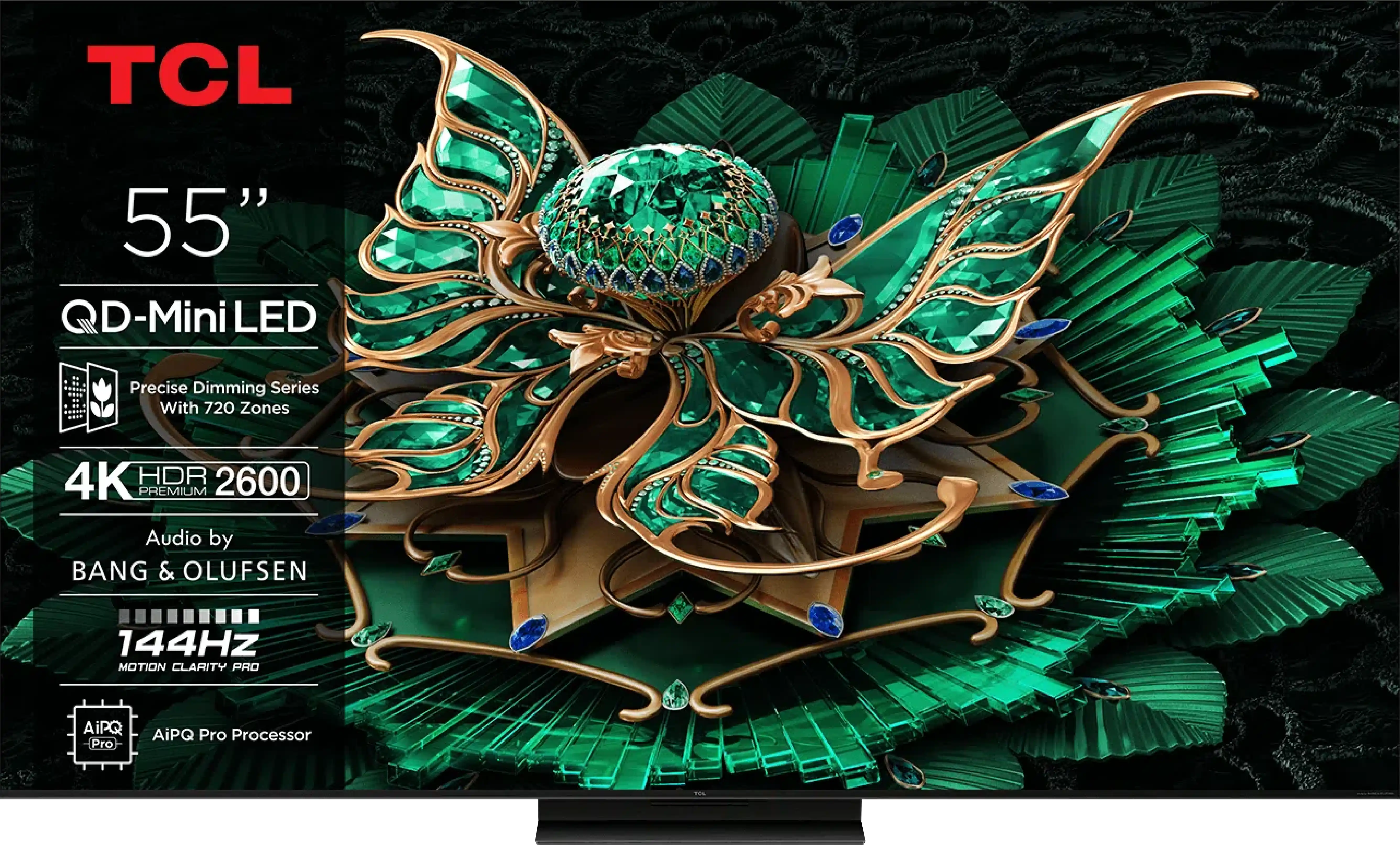
Panel type: LCD VA
Resolution: 3840x2160
System: Google TV
Model year: 2024
Complete the survey to find out the result

Panel type: LCD VA
Resolution: 3840x2160
System: Google TV
Model year: 2025
Complete the survey to find out the result

Overall rating
6.5
7.4
Movies and series in UHD quality
6.3
7.2
Classic TV, YouTube
6.0
6.9
Sports broadcasts (TV and apps)
5.9
6.8
Gaming on console
8.2
8.7
TV as a computer monitor
8.2
8.4
Watching in bright light
4.7
6.4
Utility functions
7.0
7.3
Apps
9.6
9.6
Sound quality
6.0
7.7
Complete the survey to find out what fits your preferences
Advantages
Frames styled like a picture in the set
Bracket included
VA matrix with decent contrast
Supports all popular HDR formats, including Dolby Vision and HDR10+
Great for gamers: VRR, G-Sync, ALLM, low input lag
High refresh rate - 144Hz
Free "picture mode"
Supports DTS:X and Dolby Atmos
GoogleTV operating system with the largest app base
Very good black - VA panel with a large number of Mini-LED zones
High brightness in HDR - over 1000 nits
Great for gamers - HDMI 2.1, low input lag, VRR, ALLM, etc.
Good motion smoothness - 144Hz panel
Supports multiple HDR formats: HDR10, HDR10+, Dolby Vision
Google TV operating system with access to a huge app library
Pleasant sound from built-in speakers (6.2.2) Bang & Olufsen
Disadvantages
Low brightness
Motion blur issues
No recording function on USB or PiP
Inferior image quality in "art mode" compared to Samsung The Frame
Colours and blacks fade significantly in sunlight
No VESA standard
Software bugs
Google TV can operate with minor stutters
No USB recording and PiP function
Our verdict
There are TVs that go through testing and at first glance seem to be just another "medium-range" option. The TCL C7K looks just like that - without grand claims of revolution, without ambitions to dethrone OLEDs. Yet, after spending a few days with this model, it's hard not to conclude that it's truly a successful piece of equipment. The biggest advantages? Very good picture quality at a reasonable price. MiniLED combined with a QLED filter provides vibrant colours, high brightness, and contrast that really impresses in this class. Motion in sports or games looks smooth, and the presence of HDMI 2.1 and 144 Hz refresh rate makes gaming on this model a pure pleasure. On top of that, there's the Google TV system – it offers a huge range of possibilities: from voice control, through AirPlay support, to access to all the most important apps.
Are there any drawbacks? Yes. MiniLED still has its limitations, and in the most challenging movie scenes, one can notice compromises in dimming. Google TV also doesn't always function perfectly smoothly. But these are rather minor issues that don't overshadow the overall picture – and that is really positive. It's also worth noting the difference between variants. The 50-inch version we tested can be surprising, but the 55–85 inch models perform noticeably better – they have more local dimming zones, even higher contrast quality, and better sound quality. Therefore, if you're considering purchasing the C7K, it's definitely worth reaching for the larger size.
TV appearance






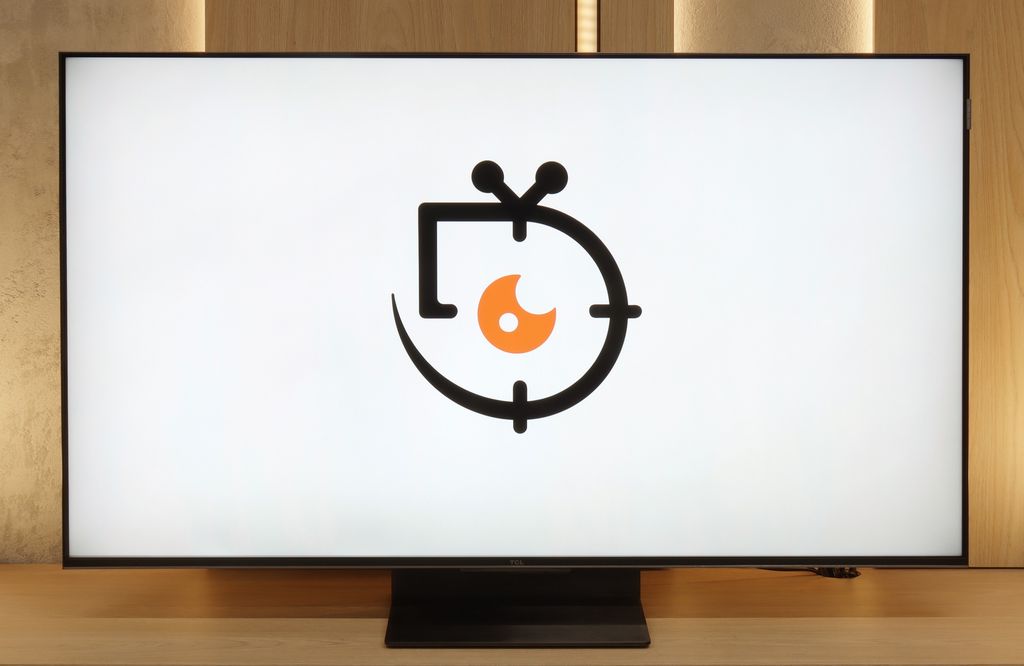
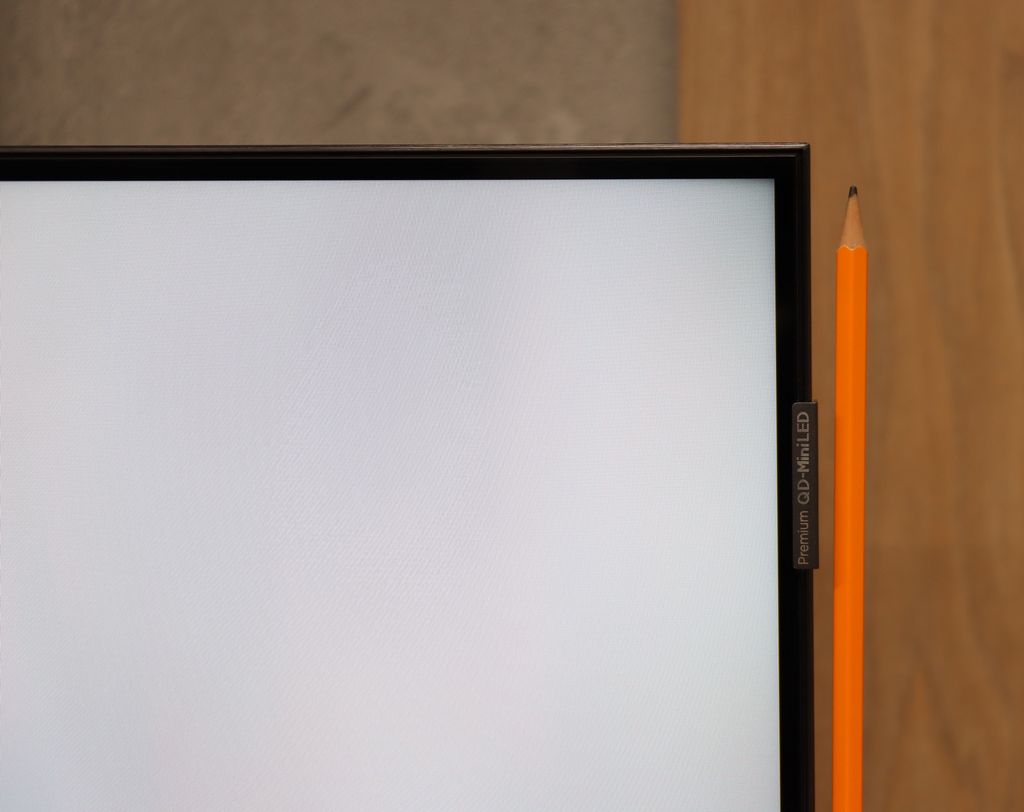
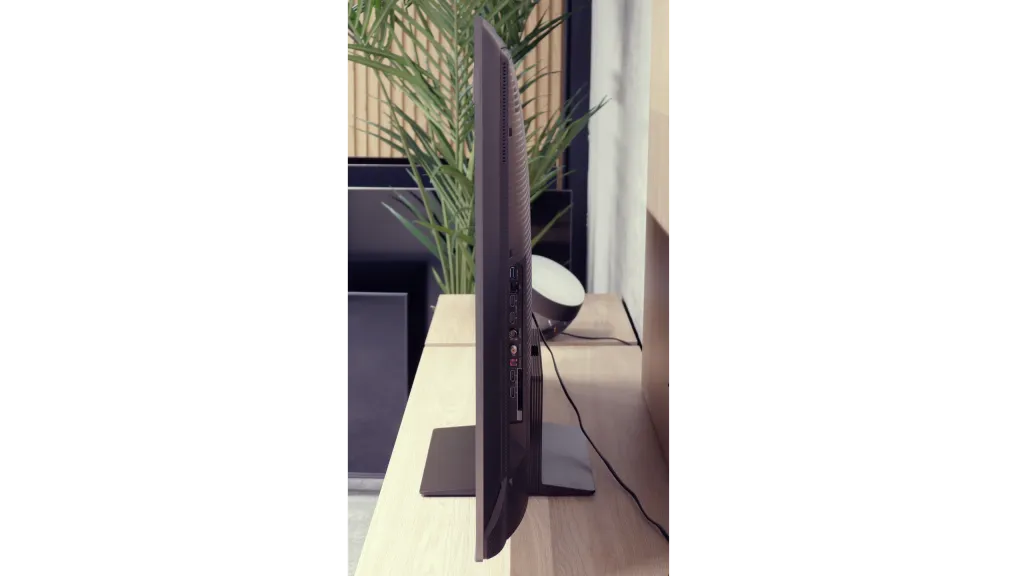
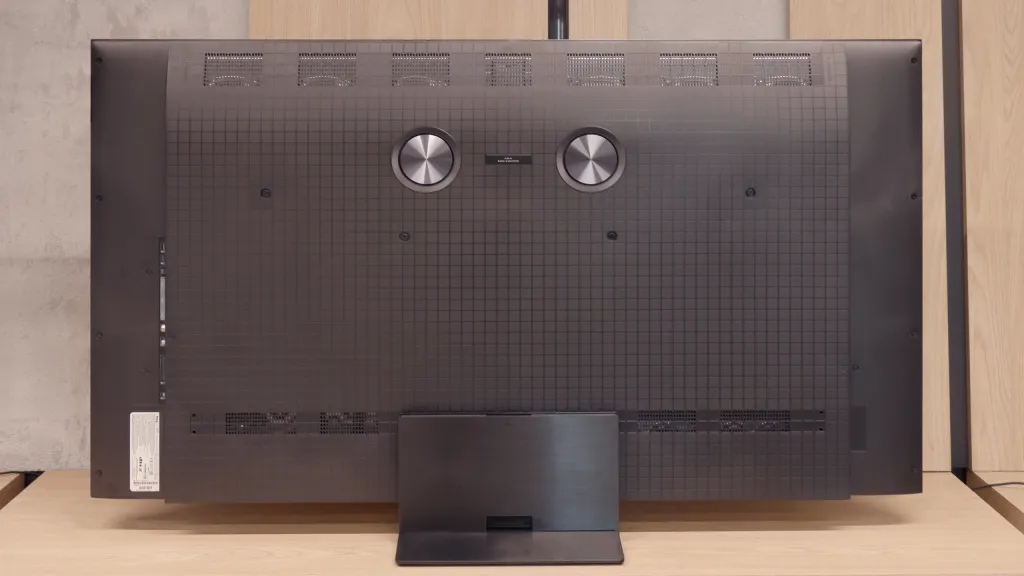
Contrast and black detail
5.5/10
8.1/10
Local dimming function: No
Local dimming function: Yes, number of zones: 1008 (42 x 24)
Contrast:

Result
5,000:1

Result
5,450:1

Result
3,800:1

Result
4,000:1

Result
3,950:1

Result
256,000:1

Result
59,850:1

Result
22,200:1

Result
16,850:1

Result
11,400:1
Halo effect and black detail visibility:

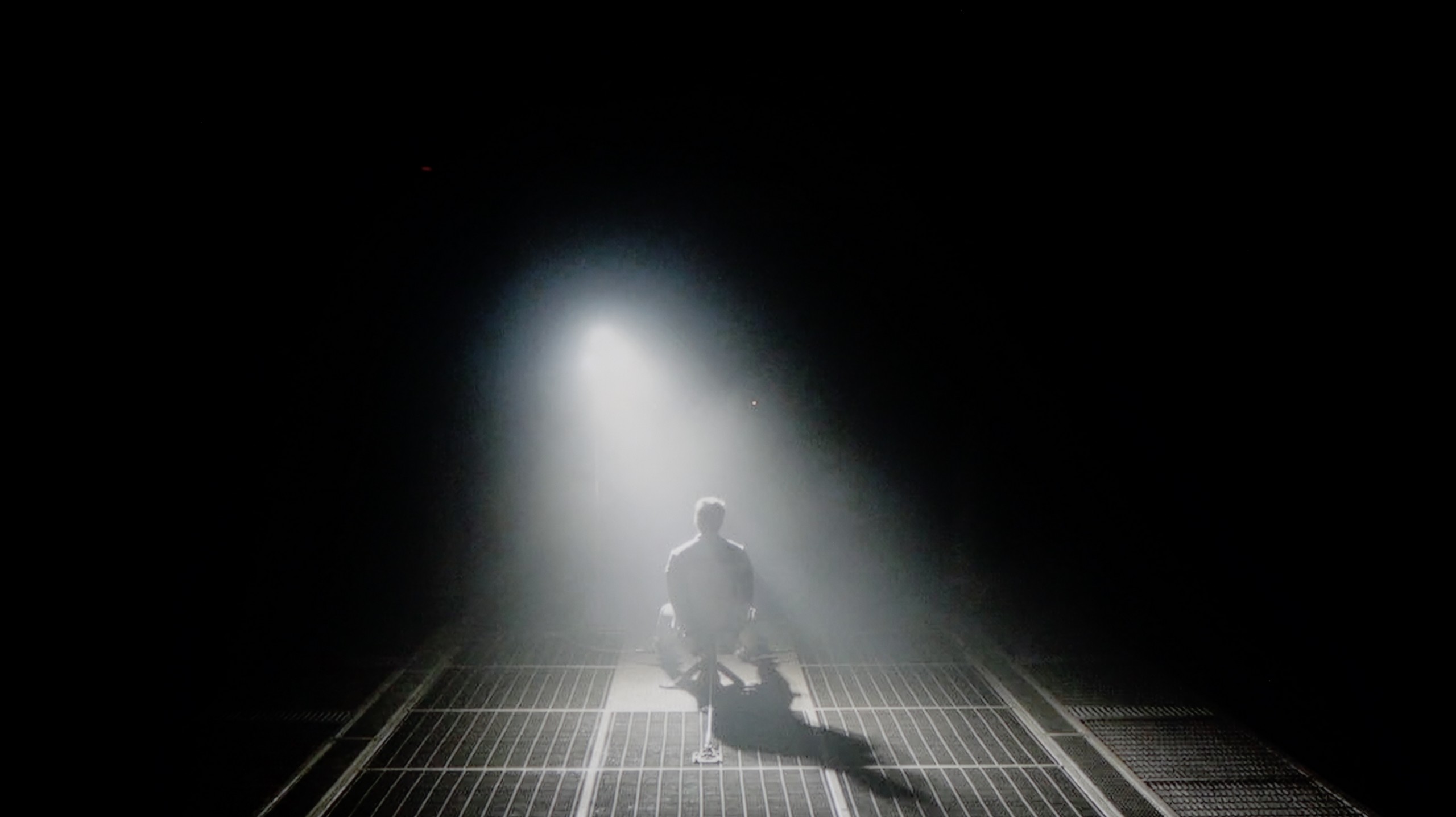
TCL A300, also known as NXTVision, uses a VA panel, so from the outset, decent contrast could be expected. On our test screens, the television indeed showed typical results for this type of panel – in the best case, the contrast reached around 5000:1, which is not a bad result for this segment.
However, it should be noted that the model is not equipped with any local dimming technology, which unfortunately is evident in practice. Black, although at times quite deep, often turns into navy blue or grey – especially in darker scenes. In short: for a television without local dimming, it’s not bad, but it shouldn't be compared to models that already have such a feature on board.
The results of the black and contrast tests in models from 55 to 85 inches are very similar, which is why in the main part of the evaluation we refer to the 65-inch version. It’s a natural phenomenon that larger sizes mean a greater number of backlight zones, and in the case of 65 inches, we counted over 1000 of them. The effect is very good – the contrast is at a high level and performs significantly better than in the smallest, 50-inch variant. Typical MiniLED limitations are still noticeable, such as the halo effect or somewhat too aggressive dimming of the image; however, here they are less perceptible than in the smaller model.
For comparison, it’s worth recalling that the 50-inch TCL C7K, despite being surprising with the use of as many as 336 dimming zones, struggled with managing the backlight in more complicated scenes – overexposures or loss of details occurred. In larger sizes, this problem doesn't disappear completely, but thanks to the greater number of zones, its impact on the perception of the image is less bothersome.
HDR effect quality
5/10
6.2/10
Luminance measurements in HDR:

Result
357 nit

Result
348 nit

Result
338 nit

Result
350 nit

Result
389 nit

Result
1108 nit

Result
405 nit

Result
865 nit

Result
290 nit

Result
848 nit
Scene from the movie “Pan” (about 2800 nits)


Scene from the movie “Billy Lynn” (about 1100 nits)

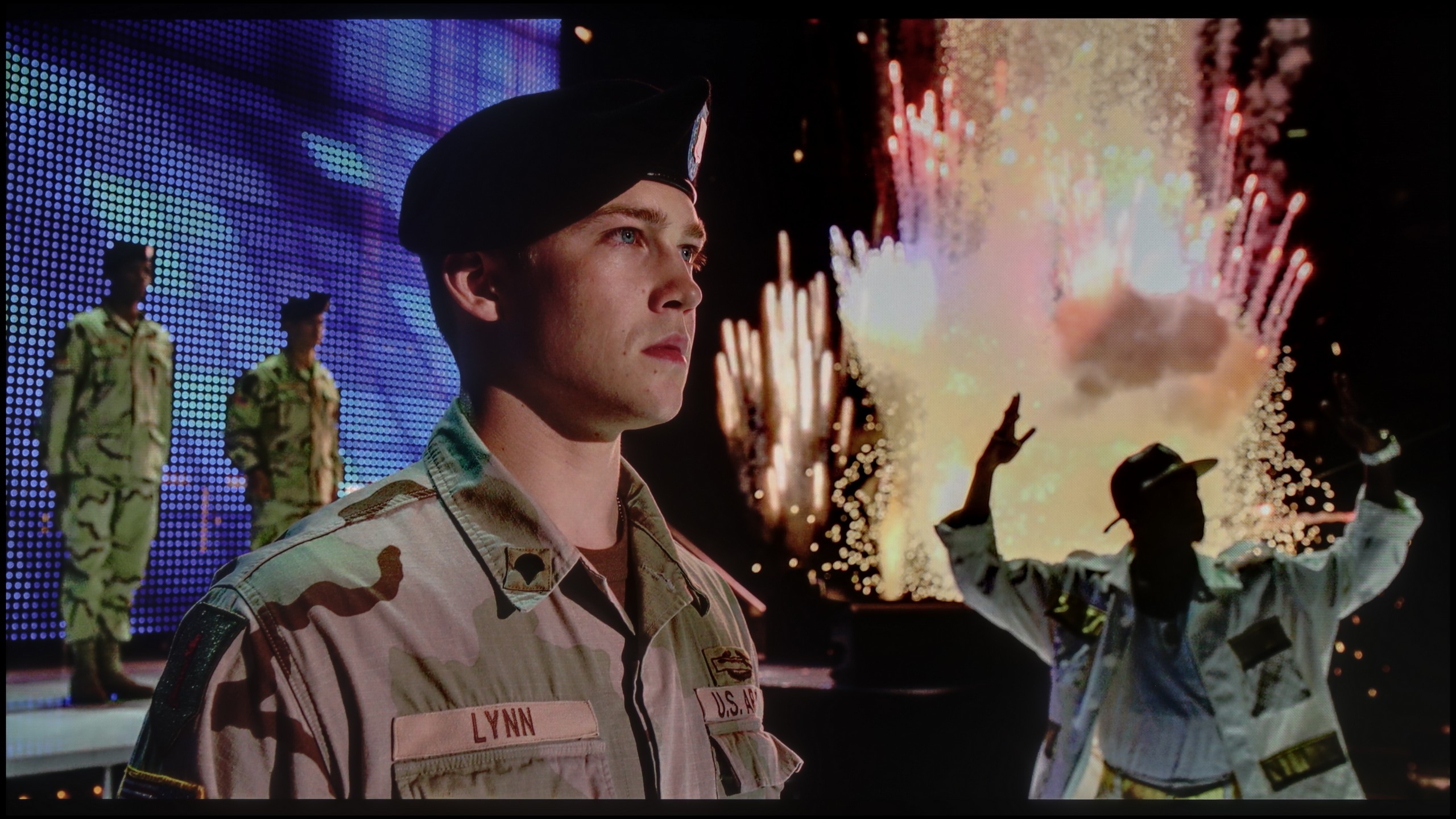
Static HDR10


Dynamic: Dolby Vision
Dynamic: Dolby Vision


HDR luminance chart:
TCL C7K / QM7K 55"-85"
HDR luminance
TCL A300W NXTVision
HDR luminance
When it comes to brightness, the TCL A300W is definitely the dimmest TV among all frame-style models, such as Samsung The Frame or Hisense CanvasTV – and unfortunately, you can see that right away. In our measurements, peak luminance reached only around 400 nits, and on test movie screens, this value dropped to 350 nits. That’s definitely too little to feel the real "magic" of bright HDR effects. As a consolation – the TV is equipped with a PFS LED coating (which is something like QLED), which provides very good coverage of a wide colour gamut, both DCI-P3 and BT.2020. In addition, there is full support for all popular HDR formats – HDR10, HDR10+, HLG, and Dolby Vision – which somewhat compensates for the shortcomings in brightness and helps improve the overall experience of materials in this quality.
In terms of brightness, the models ranging from 55 to 85 inches in the C7K series are truly impressive. Under optimal testing conditions, the 65-inch screen exceeded 1200 nits, which in practice means that the brightest scenes can dazzle with almost cinematic brilliance. These are not just dry figures from measurements – during screenings, bright skies, explosions, or reflections of light on water looked incredibly striking, often giving the impression that the television exceeds its price range. This is particularly effective in scenes with large areas of illumination, where the screen fills with intense brightness – for instance, in sun-drenched shots or during dynamic action sequences. Viewers looking for strong HDR will definitely be satisfied.
However, scenes that require precise backlight control – with tiny points of light against a dark background – prove to be more challenging. Here, the C7K, despite having over a thousand zones, can still dim brightness to maintain deep blacks. The effect is that in films like Sicario 2 or LIFE of Pi, some details, such as a distant lighthouse or single reflections, may appear less distinct or blend into the surroundings. This is a compromise inherent in MiniLED technology – it provides excellent image depth and blacks at a level not offered by standard LCDs, but this comes at the cost of limited visibility of the tiniest lights.
Factory color reproduction
5.9/10
6/10


Factory Mode
After calibration
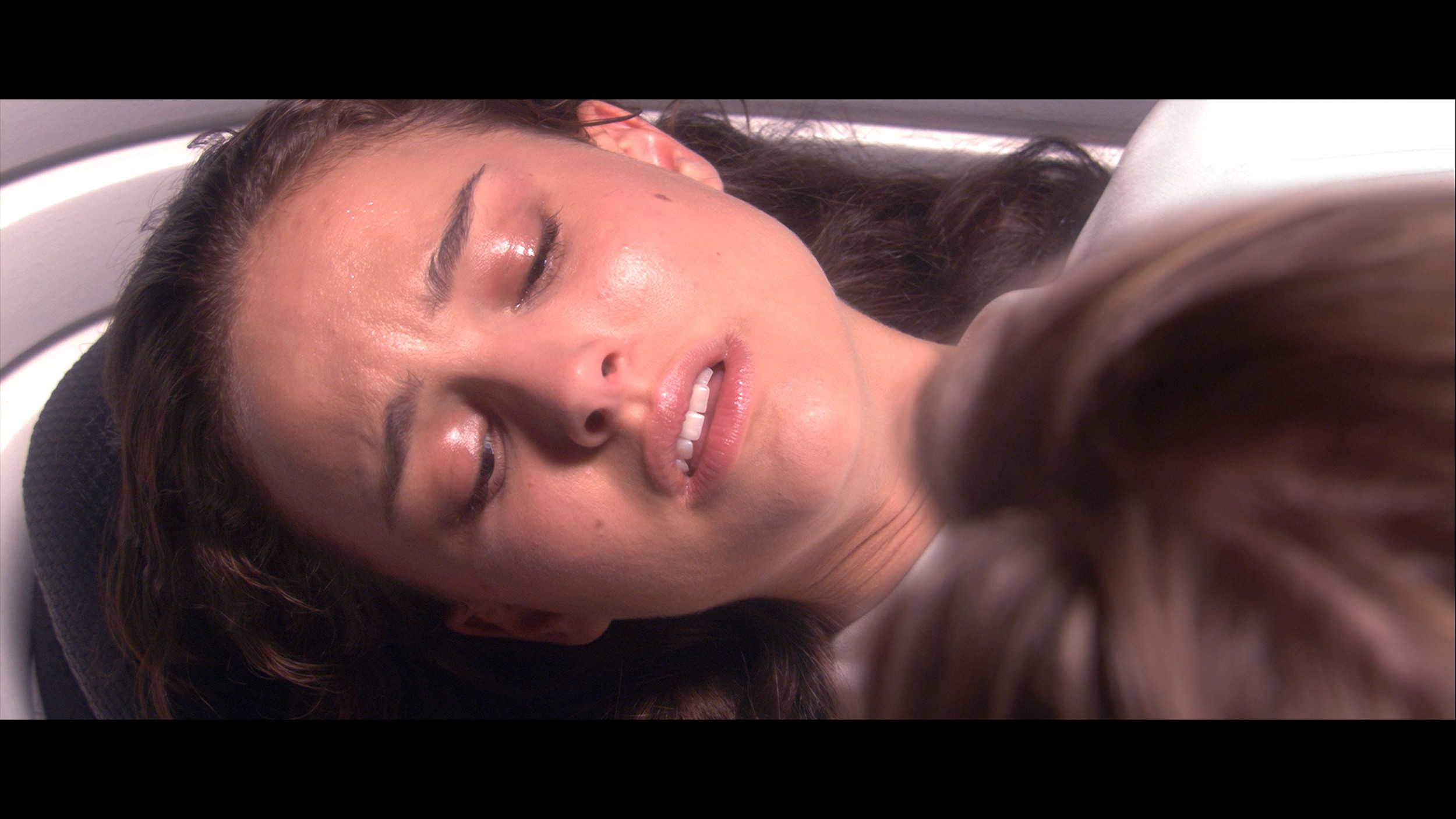
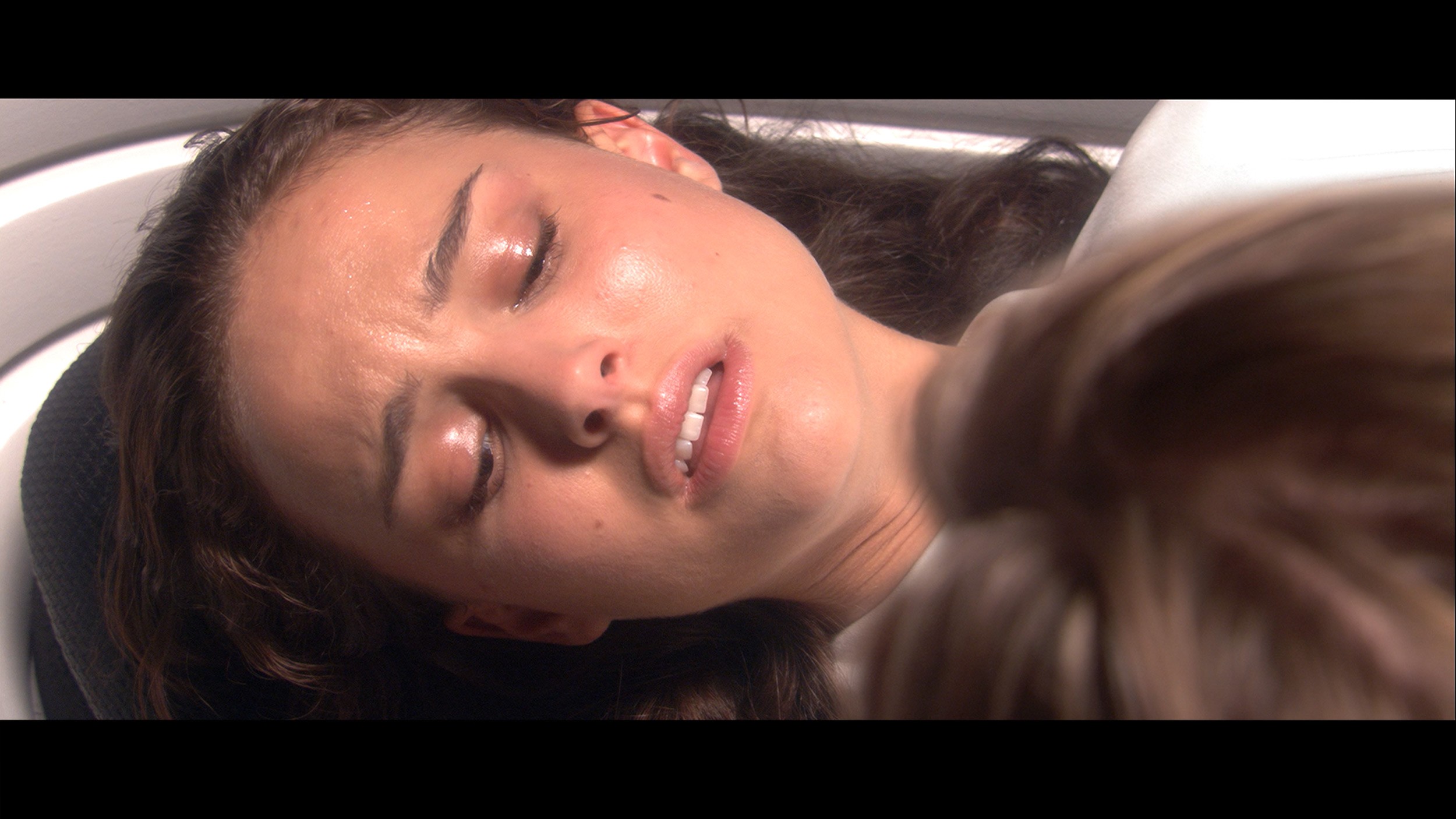
Factory Mode
After calibration
TCL A300 offers several picture modes, but without a doubt, the movie mode performs the best. Unfortunately, even though it is the best option available, it is not free from errors. Both in HD and HDR content, the image has a noticeably too warm hue – it has a slight pink tint, which is particularly noticeable in snowy scenes. Instead of pure white, we get a pinkish coating that spoils the natural perception of colours.
The management of brightness is also lacking. In the case of older HD materials, the image often seems too dark – confirmed by an elevated gamma value. Conversely, with HDR content, the effect is the opposite – the image is overly bright, as we observed in scenes from the film Pan. Such a lack of consistency also affects colour accuracy – a test with a ColorChecker showed that many samples clearly deviate from reference values.
Fortunately, TCL allows for manual adjustment of settings, so we decided to check how the television would perform after our professional calibration. The effects of this adjustment are described below.
The new feature in TCL TVs for 2025 is the long-awaited Filmmaker mode, which until now has been found in most competing brands. This is great news, as this mode is regarded as the one that best represents the original vision of the creators and is often recommended by enthusiasts of good picture quality. Unfortunately – as is often the case – the mere presence of it does not guarantee perfection. The Filmmaker mode in the TCL C7K is not without its flaws. One could critique the incorrect white balance, particularly the slight dominance of blue, which caused cool, slightly greyish skin tones. But that was not the biggest issue. The main complaint was the excessive brightness exposure, which is clearly visible on the gamma and EOTF graphs. The picture was simply too bright, at times even blown out, which affected not only the richness of the scenes but also the overall viewing experience. Some details were simply lost, and the whole image looked as if someone had overdone the brightness slider a bit. As always – we decided to see what could be squeezed out of this after calibration. And that’s where it started to get really interesting…
Color reproduction after calibration
8/10
7.5/10




After our professional calibration, the TCL A300 has literally been given a new lease on life. The image has stopped being too warm, and the colours finally look as they should – as confirmed by the ColorChecker test, where the colour samples finally started hitting their marks, at least to some reasonable degree. It was also possible to partially correct the brightness management – the image is now more balanced and less "wobbly" between different types of content. Of course, certain limitations can't be bypassed – a slightly visible blooming effect still occurs, but that's a characteristic of the technology, not something that can be eliminated even after professional settings.
Generally: after calibration, the A300 looks significantly better and gains a whole new quality.
After calibration, the TCL C7K put on a really good show, especially when it comes to SDR content. We managed to precisely tune the white balance, colour gamut, and brightness characteristics, resulting in colour errors on the ColorChecker palette dropping below a value of 2. For the uninitiated – this is an almost perfect score, meaning the image is very close to what the creators intended. Unfortunately, things didn’t look as good with 4K HDR content. While we managed to slightly calm down the white balance and correct its previous errors, it still shows that the TV has some "MiniLED traits," especially in brightness management. When we checked how the C7K handles the EOTF curve on actual movie scenes, rather than just synthetic test patterns, it turned out that the screen still has a tendency to slightly brighten the entire image. This affects the overall experience – blacks lose some depth, and the image becomes less contrasty than it should be. Despite these minor shortcomings in HDR content, the overall reception of materials – especially in SDR – is really very good. After calibration, the C7K can display an image that can successfully compete with much more expensive models. Good tuning of colours, natural skin tones, and pleasant brightness make movie sessions and everyday content viewing more than satisfying.
Smoothness of tonal transitions
8.6/10
8.6/10





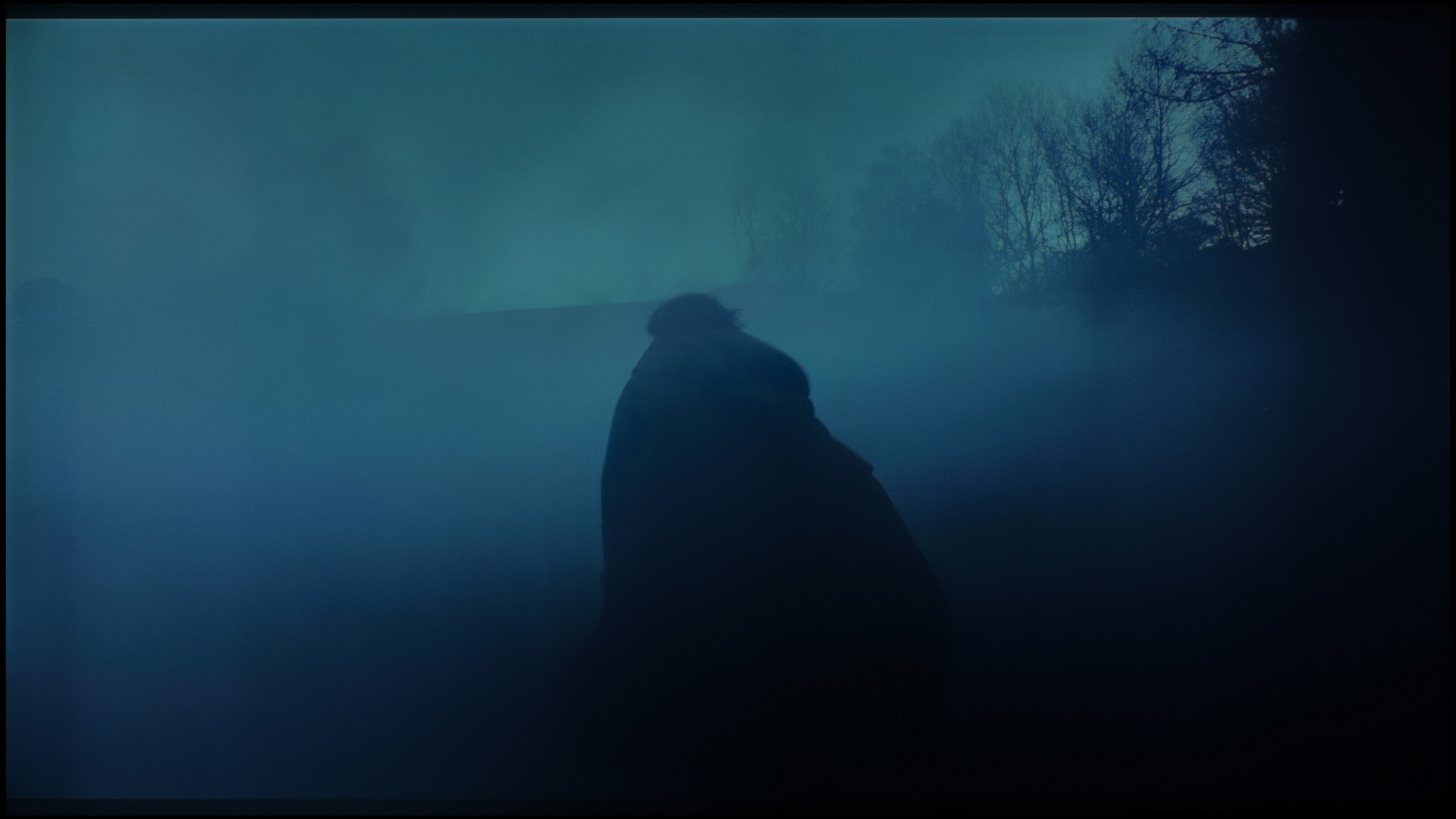






TCL A300 NXTVision is another frame-style television that really manages well with the smoothness of tonal transitions. It's hard to find distinct bands or sharp transitions between shades of one colour – it all looks natural and smooth.
However, it's fair to say that among the three tested models (The Frame and S7NQ), TCL performs the weakest in this category. In darker and lighter scenes, you can notice slight imperfections. Nevertheless, looking at it as a whole, for a television in this range – it really presents itself solidly. It might not be the best of the bunch, but it holds a very good standard.
The TCL C7K performs very well with colour gradation – in most tested scenes, tonal transitions were smooth, and colours blended together without visible edges or an artificial "splotch" effect. In everyday use, it's hard to find any faults – the image looks natural, without jarring transitions or digital artifacts. Some limitations only arise in very dark tones – particularly in a heavily muted grey palette, where the TV may struggle to reproduce an ideal gradation. But this is absolutely understandable, as even many significantly more expensive models in this range simply fail. Fortunately, these situations are rare and do not significantly affect the overall perception.
Image scaling and smoothness of tonal transitions
5.5/10
5.5/10
Smooth transition function

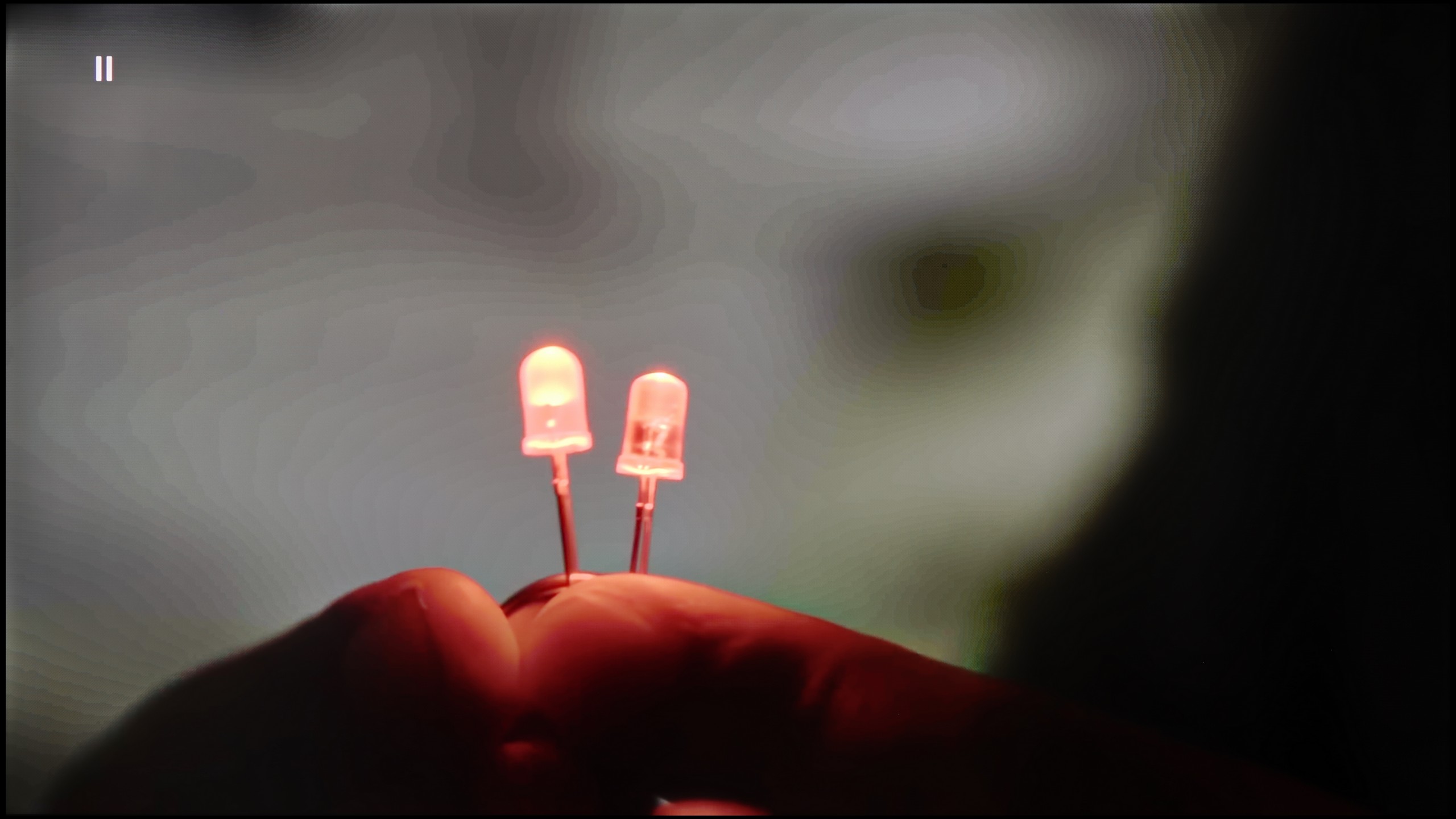
Image without overscan on the SD signal


TCL A300 handles tonal transitions in high-quality films very well, but the question arises – how does it perform with weaker materials? The TV is equipped with a tonal smoothing feature; however, its effectiveness can be described in one word: “random”. In one scene, it may work and improve the gradation, but when turned off… the effect remains the same. There is a lack of consistency and predictability here.
Image scaling is also not one of A300's strong points. On the test pattern, the main character actually looked better than on the raw signal, but with thin lines – like fonts or background details – there was noticeable jaggedness and aliasing. On the plus side, the TV does not cut off the image and has no issues with overscan, but the overall quality of scaling is rather average.
TCL C7K comes with a feature that, according to the manufacturer, aims to smooth out unwanted colour transitions – something like a rescue for less successful tonal changes. It's called "Gradual Smoothing" and... well, it sounds ambitious, but in practice, it works very poorly. Regardless of whether we set it to low or high, the difference is minimal. And worse still – the feature can cut out elements from the image that should remain. Fortunately, film grain is left untouched, so at least it doesn't smooth everything indiscriminately, but even so – it's best to just turn this option off.
When it comes to upscaling lower resolution content, it's already better. SD and HD materials look quite decent, although at times we felt that the image loses sharpness and becomes too soft – as if something had taken away its clarity. Fortunately, with very low sources (e.g. 576p), there was no overscan effect, meaning the image wasn't artificially cropped – everything fit on the screen as it should.
Blur and motion smoothness
6.4/10
8.1/10

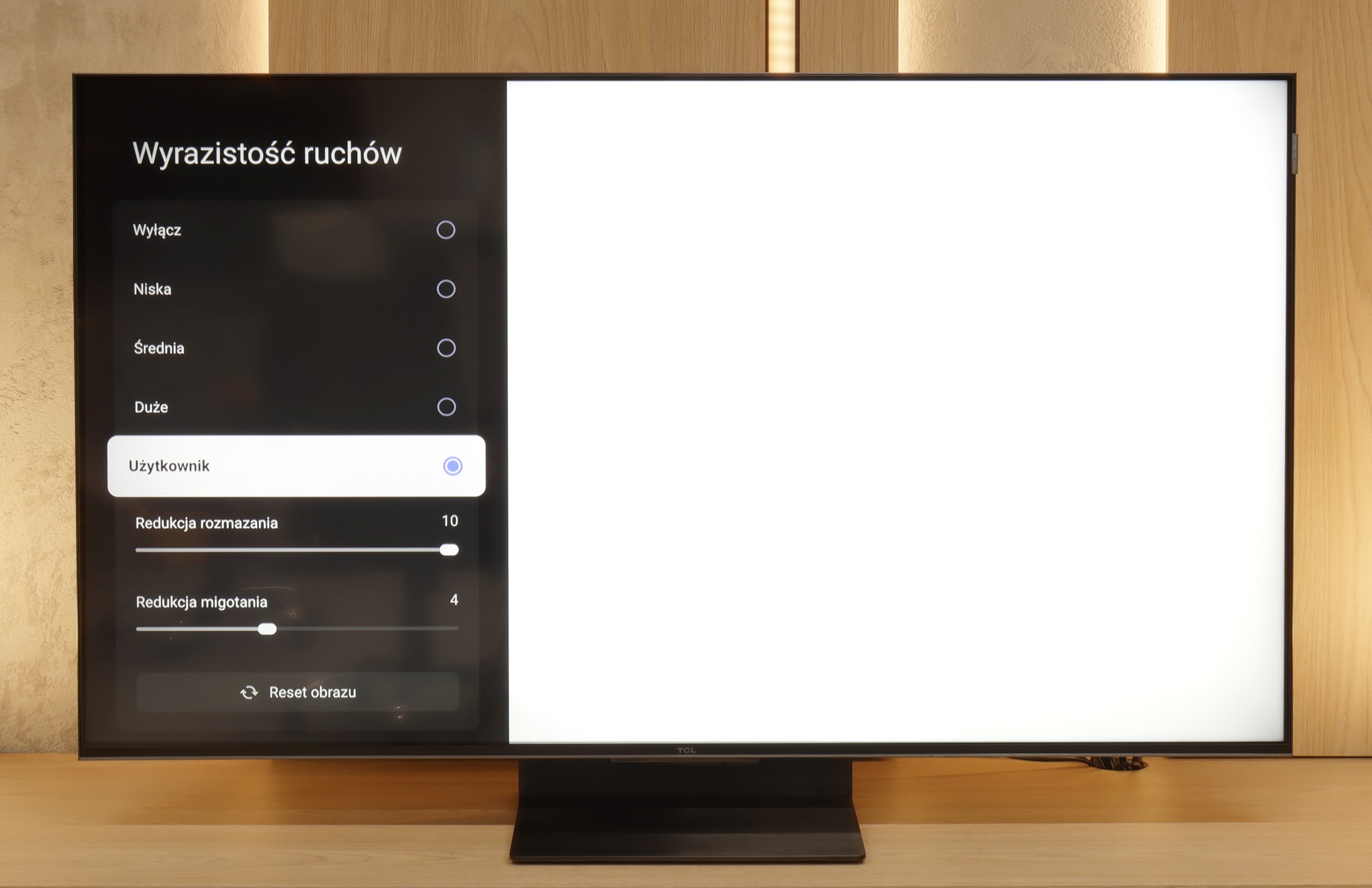
Blur (native resolution, maximum refresh rate):





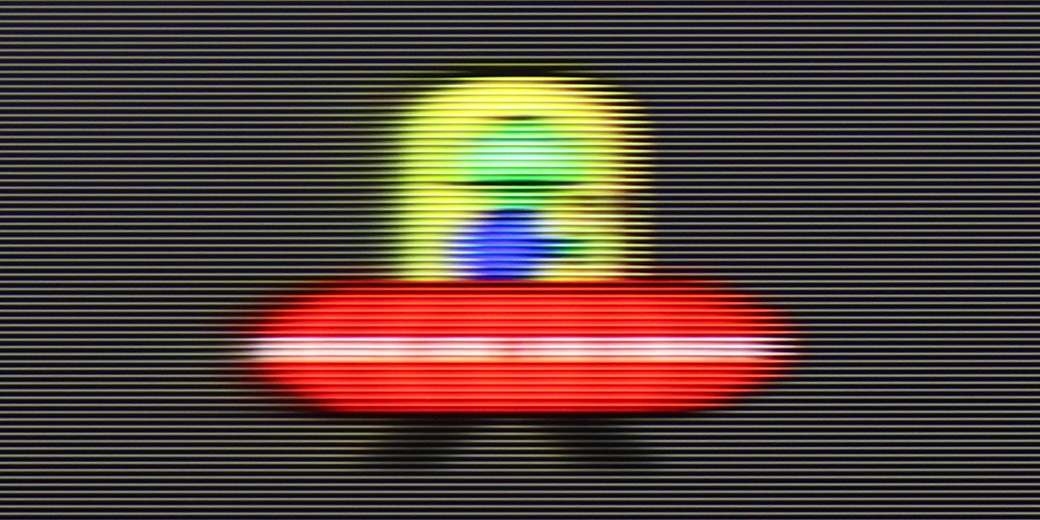
Blur (BFI function enabled):



Smużenie ():
Smużenie (4K@144Hz):



TCL A300 is equipped with a 144 Hz panel, which should instantly satisfy virtually everyone - both gamers and sports fans. Motion is fluid and the image is clear even during fast scenes. Additionally, the television offers a motion enhancement feature called "Motion," where we find two sliders on a 10-point scale. These allow you to adjust the effect to your own preferences - from a classic, filmic look with visible frames to a very smooth (though already unnatural) image reminiscent of a soap opera effect. This way, everyone can find a setting that suits them.
TCL C7K handles motion smoothness really well. The panel used in it offers a refresh rate of 144 Hz, which alone suggests that this TV is more than just a regular "60 Hz" panel. Moreover, if we connect the C7K to a computer and set the resolution to Full HD. But we will write more about this in the section for gamers and PC compatibility. Returning to everyday use – both sports and movies look very good here. Thanks to the quick panel and the well-functioning motion smoothening feature, the C7K is great for watching matches as well as for movie screenings. In the menu, we find two sliders – blur reduction and flicker reduction – that allow adjusting the smoothness effect to personal preferences. At lower settings, we get a more cinematic effect, with a slight judder. At higher settings – the image becomes more theatrical, smoothly even to excess. Whatever your taste, everyone can set it to their liking.
Console compatibility and gaming features
9.8/10
9.8/10
- ALLM
- VRR
- VRR range48 - 144Hz48 - 240Hz
- Dolby Vision Game Mode
- Correct implementation of HGIG
- 1080p@120Hz
- 1440p@120Hz
- 4K@120Hz
- Game bar

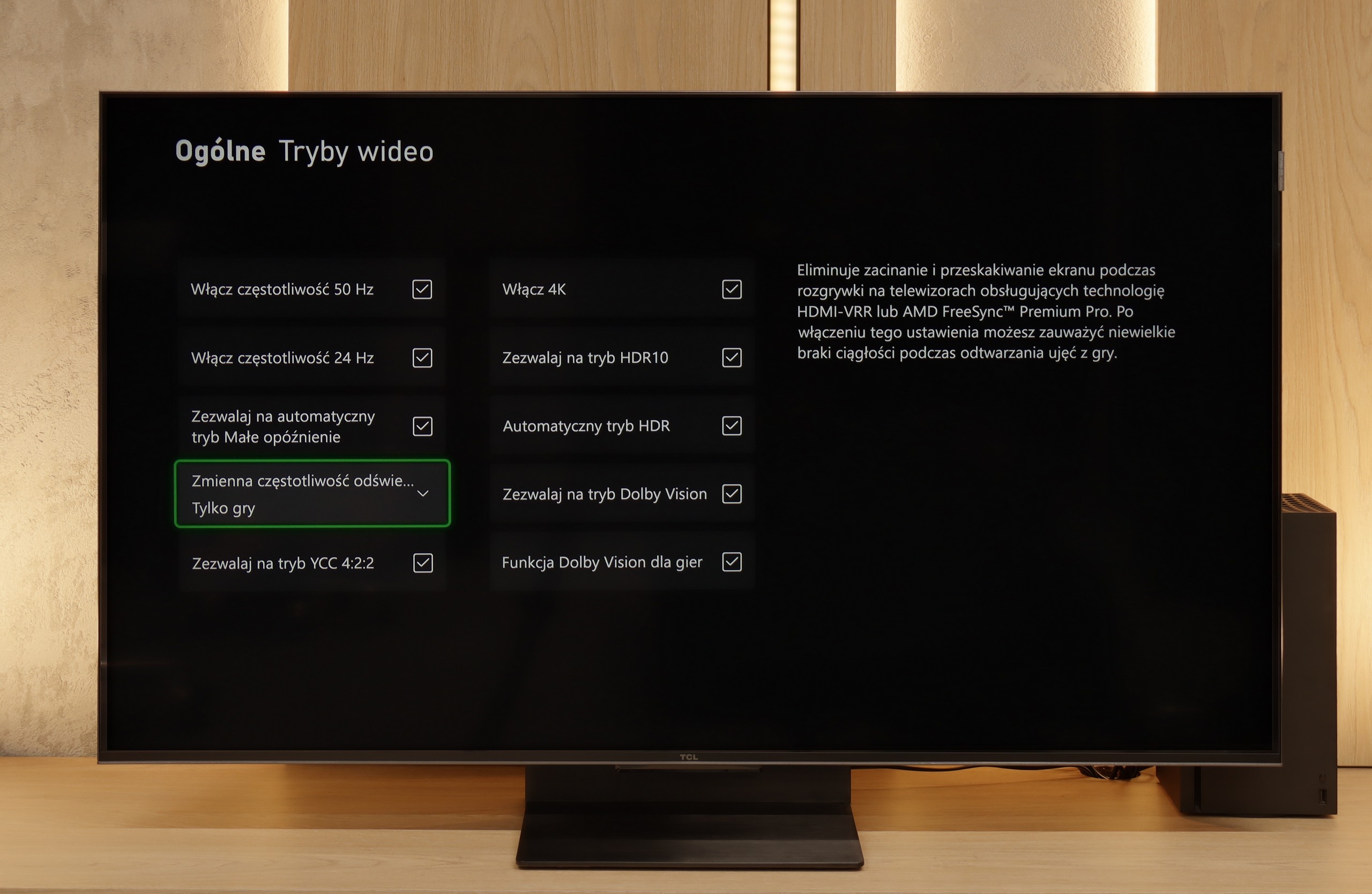

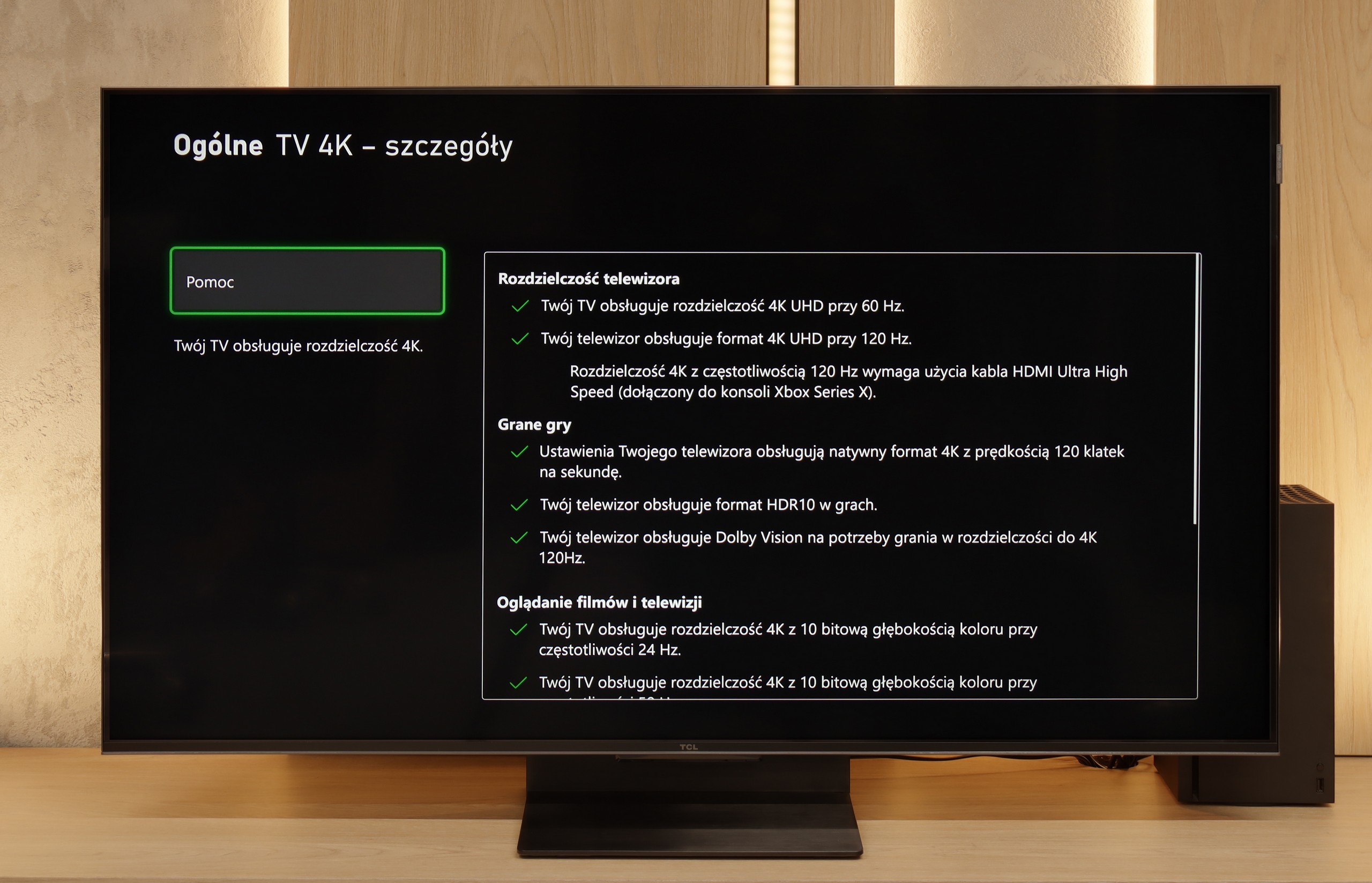

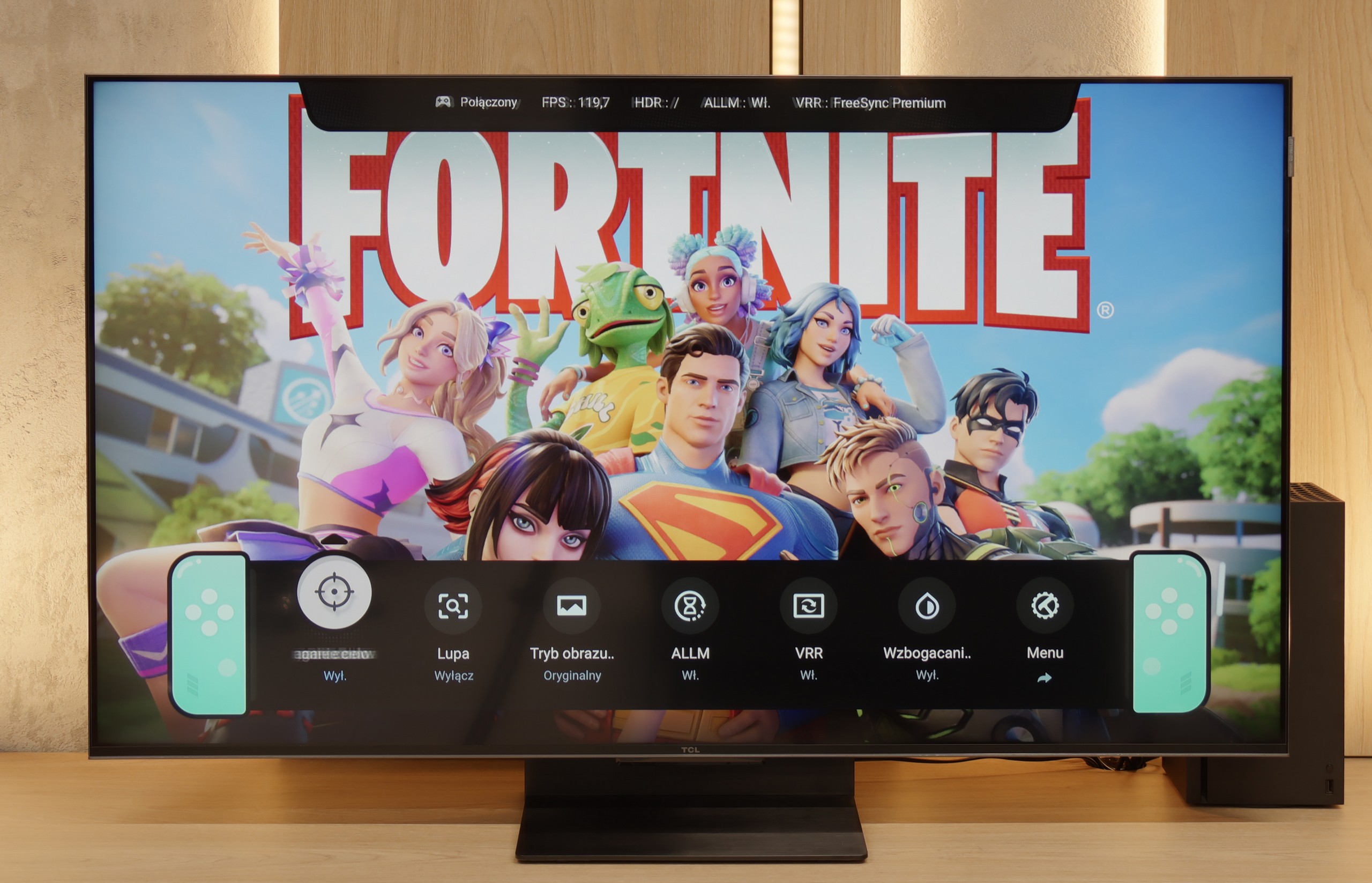

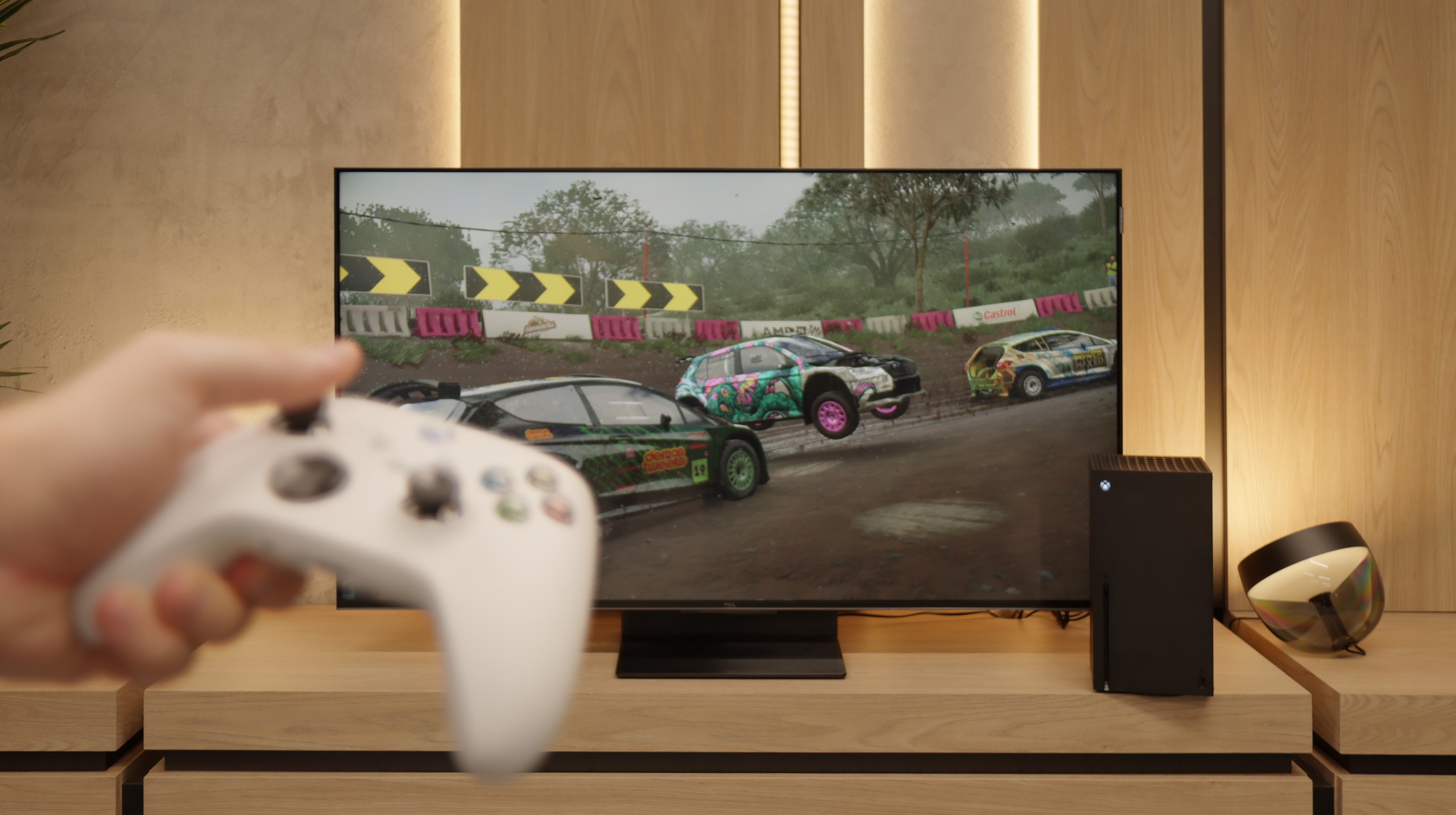
The TCL A300 is a television designed not only to transport us to a digital art museum but also into the full-fledged world of gaming. It offers practically everything you can expect from gaming hardware: two full-bandwidth HDMI 2.1 ports, 144 Hz refresh rate, support for VRR and ALLM.
It also deserves credit for the proper implementation of the HGIG mode – something that competing Hisense sometimes struggles with. The television handles lower resolutions (e.g., Full HD) with ease while maintaining high refresh rates, which will be appreciated by owners of older consoles or PCs.
Additionally, there's an attractive and clear GameBar that facilitates quick access to settings for gamers. The A300 is indeed well-prepared for gaming at the highest level – it’s just a shame that issues with ghosting somewhat detract from its overall appeal as a gaming device.
TCL C7K is a TV that on paper looks like the dream gear for a gamer – and most importantly, it also holds up in practice. First, the good news: we have two HDMI 2.1 ports with full bandwidth, so we can easily connect both a console and a computer, making use of all their capabilities. The panel itself supports a refresh rate of 144 Hz, which gives a considerable advantage in fast-paced games. On top of that, it comes with a full suite of gaming features: VRR (variable refresh rate), ALLM (automatic low latency mode), and Dolby Vision support in games. There’s also an HGiG mode that provides an HDR effect aligned with the creators' intentions. GameBar, which is an information bar for gamers. It operates quickly, looks clear (like a Nintendo console👌), and displays what matters most: the current frame rate, VRR status, and even HDR parameters.
Input lag
9.7/10
9.6/10
SDR
HDR
Dolby Vision
In terms of input lag, the TCL A300 performs really well. Values below 10 ms at a refresh rate of 120 Hz are something many gamers dream of – such low lag is practically unnoticeable, both during everyday gaming and in more demanding esports titles. One could nitpick about the result of 23 ms in Dolby Vision mode at 60 frames, but it's still low enough that serious objections are hard to come by. In this category, the A300 truly excels.
When it comes to delays, the C7K doesn’t give any reasons to complain. In games at 120 Hz, the input lag is around 10 ms, which means the TV responds really quickly. And interestingly – even in Dolby Vision mode, the result is very similar, which isn’t always the standard. Good job, TCL. At 60 Hz, the lag does increase a bit, but that’s completely normal and applies to pretty much every TV with 120Hz refresh rates and higher. The important thing is that everything still runs smoothly and there’s no feeling that anything is unresponsive to our actions.
Compatibility with PC
8.2/10
8.4/10

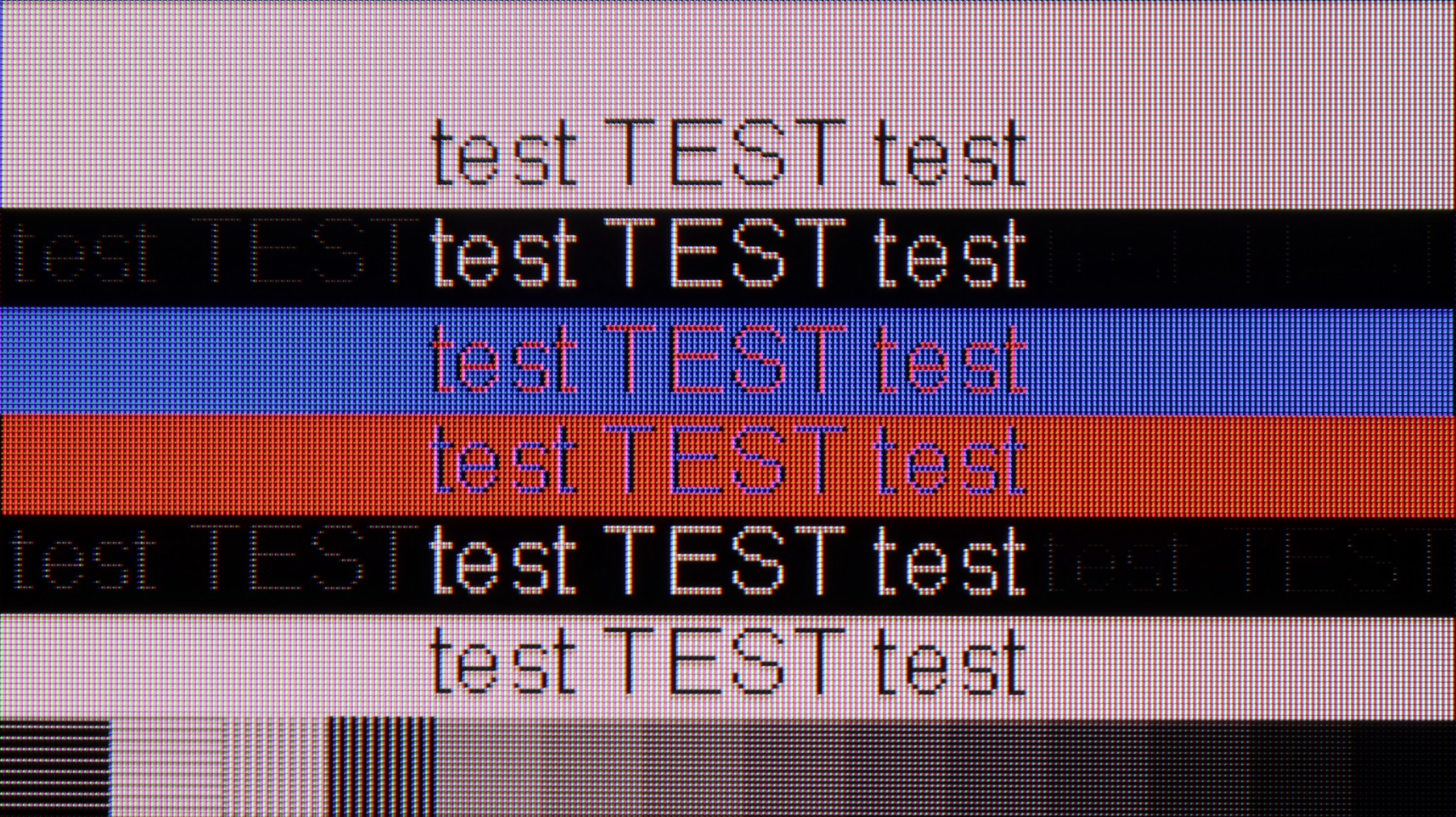
If we plan to use the TCL A300 as a computer monitor, we may be pleasantly surprised. The television performs really well in this role. It is equipped with a 144 Hz panel, supports G-Sync, and, as we mentioned, offers very low input lag, so gaming on it with a connected PC is pure enjoyment.
Working with text is also possible, although with some limitations. The TCL A300 has slight issues displaying dark fonts and thin lines – this is due to the construction of the subpixels, which in everyday use can be a bit annoying, even though it looks better in photos than in reality.
The television supports chroma 4:4:4, but only up to 120 Hz. Therefore, we noted that this feature is available, but with a limitation – if we care about perfectly readable fonts, it's worth sticking with the refresh rate of 120 Hz. At 144 Hz, the clarity of the text may suffer somewhat.
If we intend to connect the C7K to a computer – especially for gaming – there's definitely something to play with. We've got 4K at 144 Hz, which already sounds fantastic, but if we lower the resolution, the TV can display even 280 Hz. In e-sports, where every fraction of a second counts, this really makes a difference. On top of that, there's support for G-Sync and FreeSync, so no matter what graphics card we have – the image will be smooth, with no stuttering or tearing.
But if we plan to set the C7K on a desk and use it like a monitor, it's a bit less "rosy." Sure, it supports chroma 4:4:4, so fonts should be sharp, but with very dark letters, there's a slight blurriness and dimming of the edges. It's not something that immediately stands out when gaming or watching, but when working with text – it might be distracting. In everyday use – probably without worries, but if we plan to place a 50-inch screen a metre from our face, it's worth keeping this in mind.
Viewing angles
3.2/10
3/10
The viewing angles on the TCL A300 NXTVision are, let’s be honest, average. The TV is equipped with a VA panel, which inherently has quite limited angles, and unfortunately, this is evident here. The video below speaks for itself – even a slight deviation from the centre results in a noticeable drop in contrast and colour saturation. It’s a shame that this is yet another frame-style TV that has done absolutely nothing about it. After all, we don't always have the option to sit perfectly straight on – especially if the device is also meant to serve a decorative function in the living room.
There are no surprises here – the C7K has classic viewing angles for a VA panel. That is: we sit directly in front – it's fantastic. Colours look good, contrast is strong, everything is in place. But just shifting slightly to the side makes it worse – the image loses saturation, blacks go grey, and the overall impression diminishes somewhat. So if we're planning to watch together with a few people or have a couch that takes up half the living room – it's worth seating everyone more centrally. You can watch from the side, but don’t expect miracles – it's simply a characteristic of the VA panel.
TV efficiency during daytime
4.7/10
6.4/10

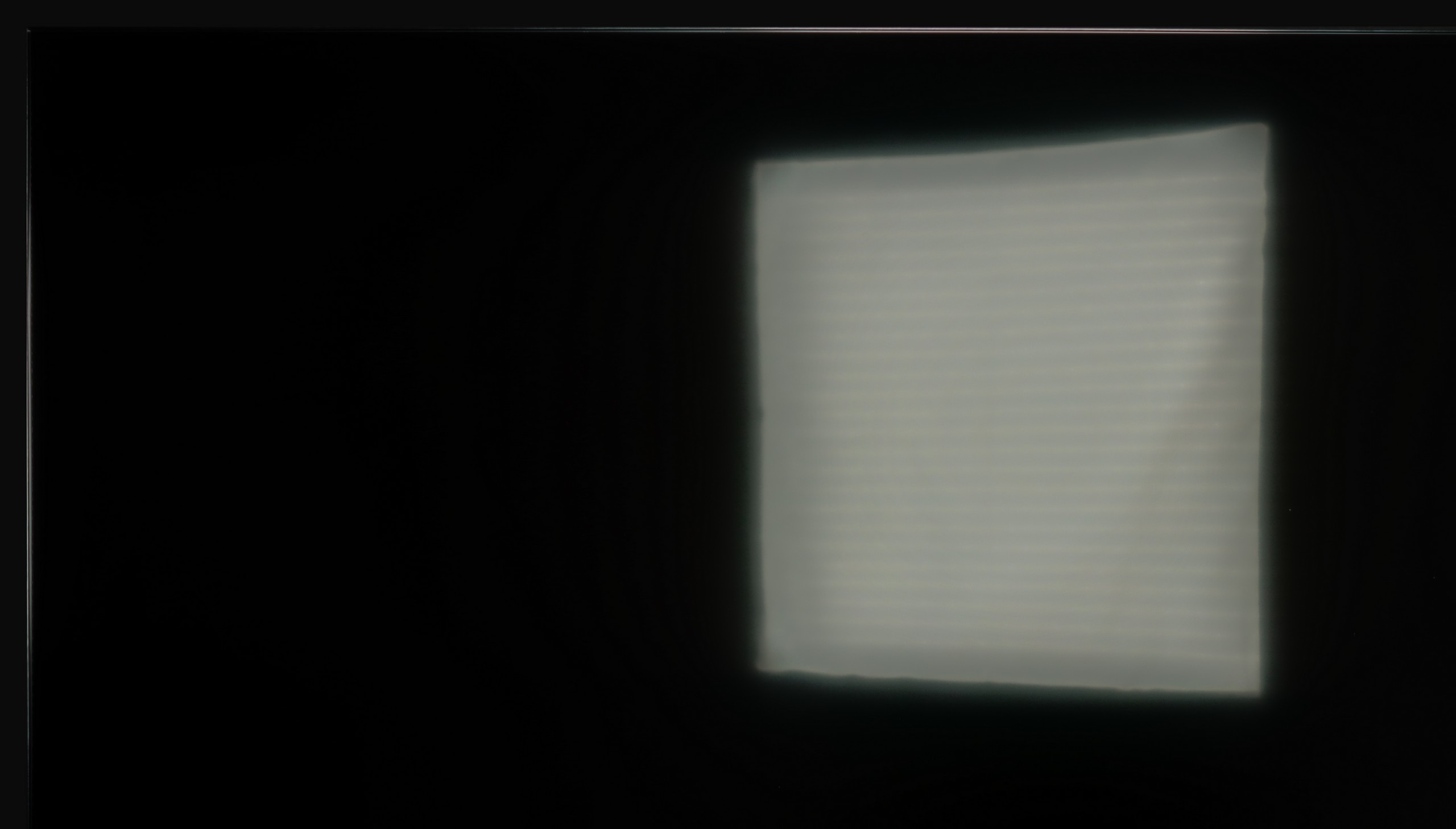


Matrix brightness
Average luminance SDR
TCL C7K / QM7K 55"-85": 529 cd/m2
TCL A300W NXTVision: 388 cd/m2
The TCL A300 NXTVision is equipped with a matte panel very similar to the one found in one of its Chinese competitors – the Hisense S7NQ. This type of surface does quite well in reducing reflections, although it must be admitted that it performs worse than Samsung's The Frame, which offers a significantly higher level in this regard. As is usually the case with matte displays, blacks during the day lose depth and appear more grey than black – and this is no different here. Unfortunately, the fact that the A300 is the darkest TV of the three tested doesn’t help either. This gives it a real problem in breaking through in heavily sunlit rooms.
Fortunately, the TCL C7K performs quite well in a bright room. The screen has a satin finish, which effectively reduces reflections and means that even on sunny days we don't have to worry about reflections from lamps or windows. Importantly, the colours maintain their intensity and don't wash out as can happen with weaker matte panels. As for brightness, the average for content like YouTube or regular television is a bit below 500 nits. It's not a record-setting result – for example, the MQLED85 (C765) performs better in this regard. However, for everyday viewing during the day, it should work without major issues, as long as we don't plan to place it opposite a south-facing window without curtains.
Details about the matrix
Subpixel Structure:
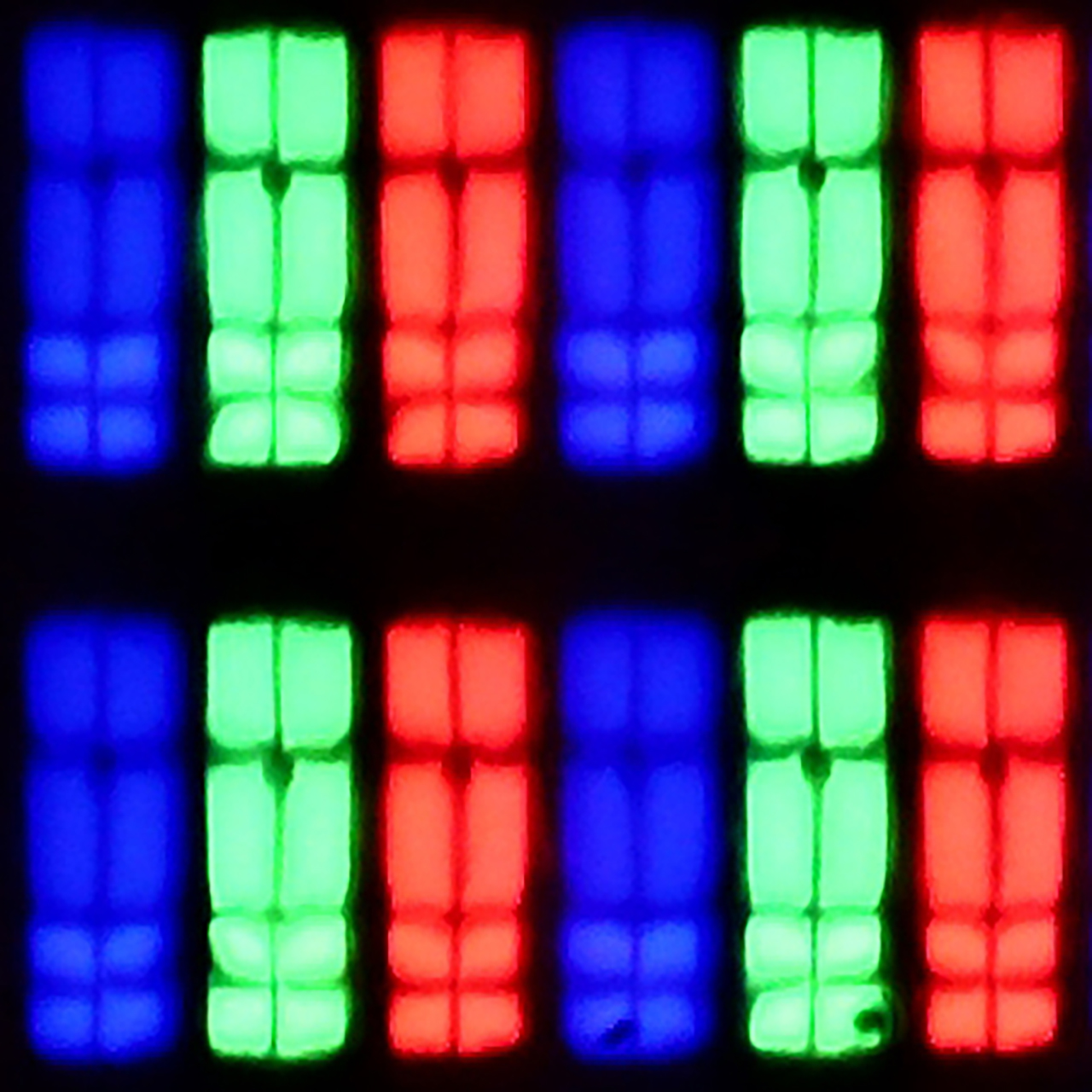
Panel uniformity and thermal imaging:

TCL A300W NXTVision
TCL C7K / QM7K 55"-85"
TV features
7/10
7.3/10
- HDMI inputs2 x HDMI 2.0, 2 x HDMI 2.1 48Gbps2 x HDMI 2.0, 2 x HDMI 2.1 48Gbps
- OutputsToslink (Optical audio), eARC (HDMI), ARC (HDMI)Toslink (Optical audio), eARC (HDMI), ARC (HDMI)
- Network InterfacesWi-Fi 2.4GHz, Wi-Fi 5GHz, Ethernet (LAN) 100MbpsWi-Fi 2.4GHz, Wi-Fi 5GHz, Ethernet (LAN) 100Mbps
- TV receptionDVB-T, DVB-T2, DVB-S, DVB-S2, DVB-CDVB-T, DVB-T2, DVB-S, DVB-S2, DVB-C
Classic features:
- Recording to USB (terrestrial TV)
- Recording programming
- Picture in Picture (PiP)
- RF remote control (no need to aim at the screen)
- Backlit remote control
- Teletext
- Audio only mode
- Bluetooth headphones support
- Simultaneous Bluetooth headphones & TV audio
Smart features:
- AirPlay
- Screen mirroring (Windows Miracast)
- Voice search
- Voice search in native language
- Ability to connect a keyboard and mouse




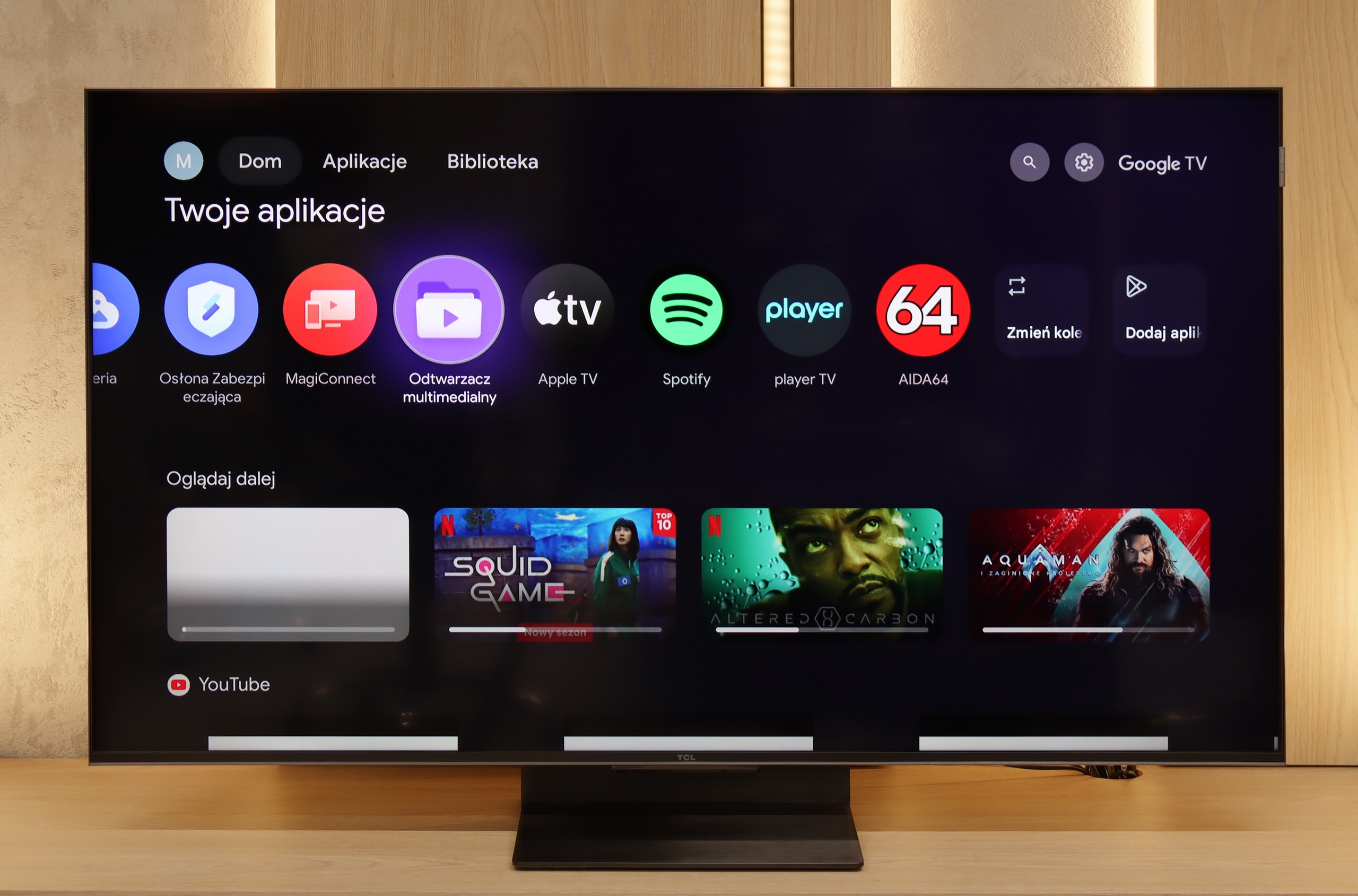
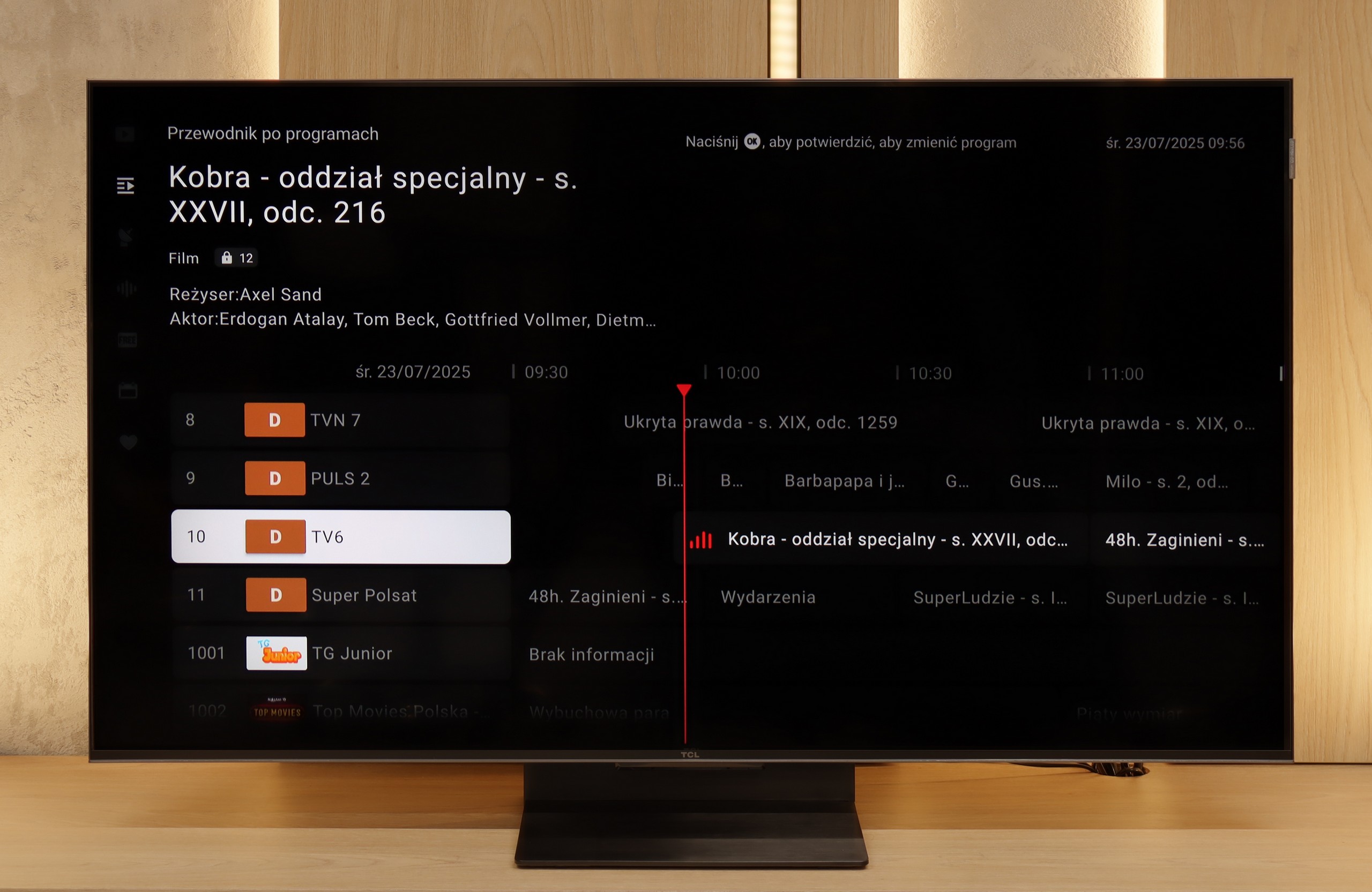
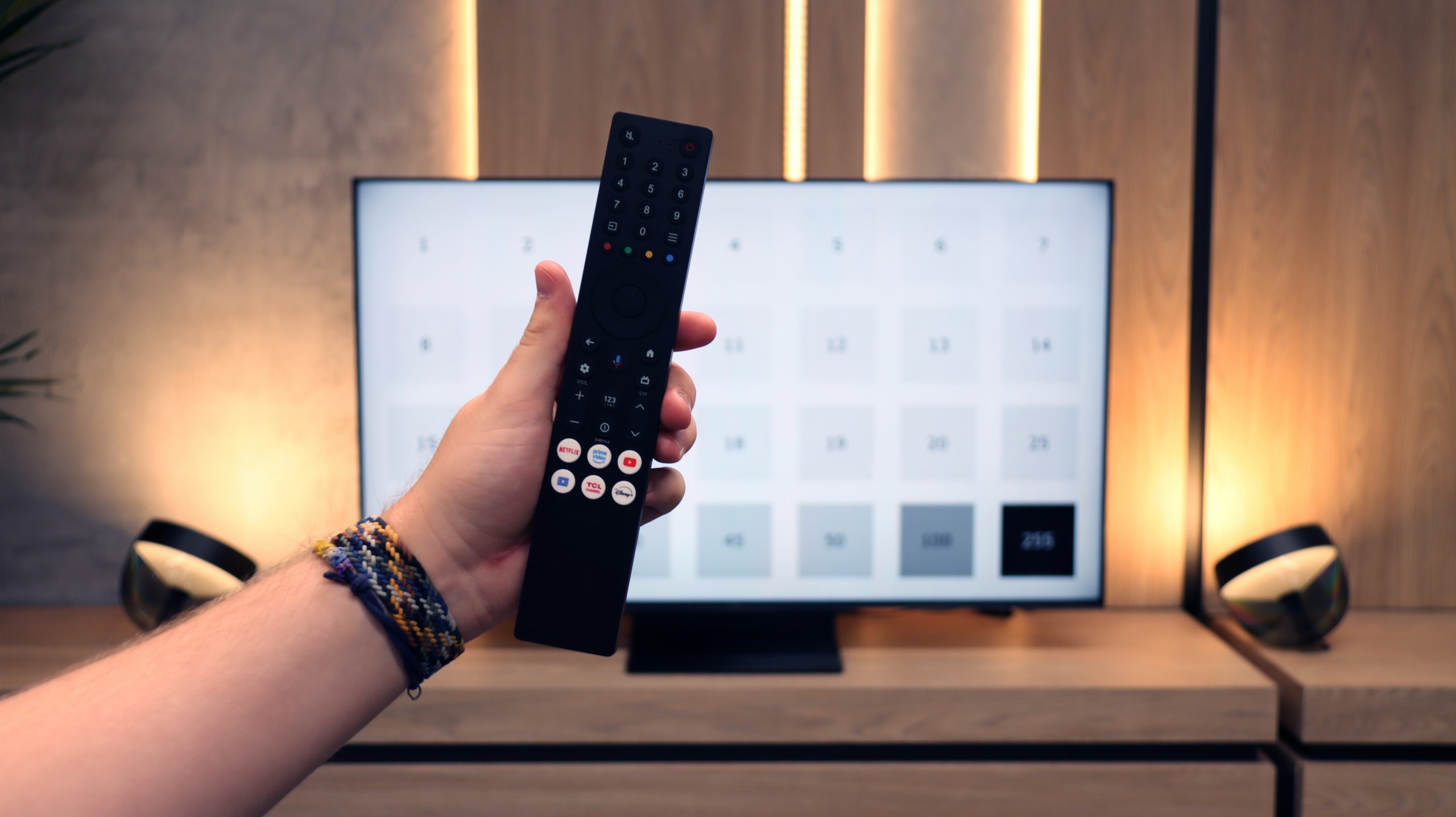
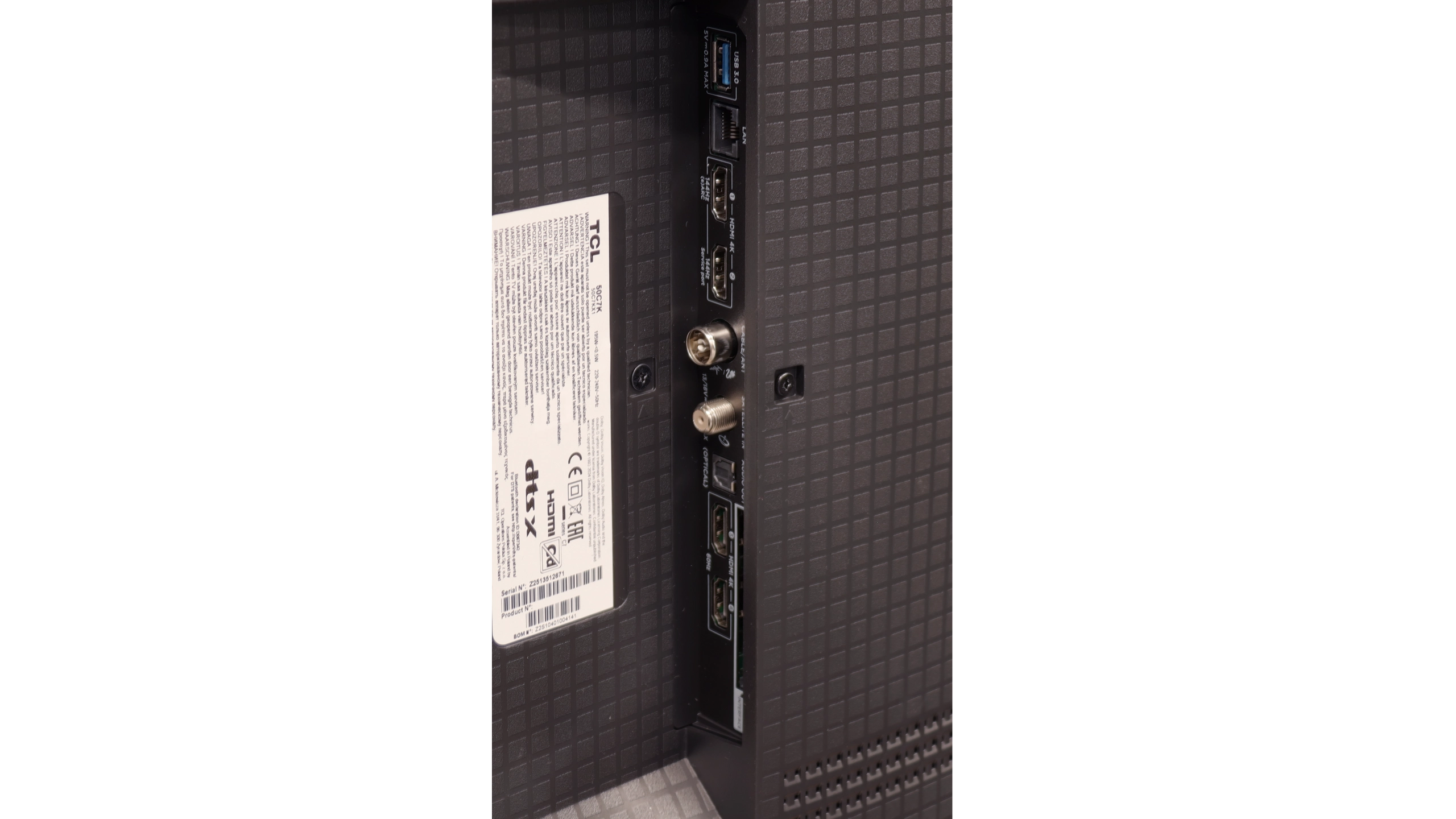
TCL A300 is a television styled as a painting, which in everyday use can successfully pretend to be a work of art hanging on the wall. It is equipped with a special image display mode, additional frames in a light wood tone, and a flat wall mount that allows you to hang the television like a real painting – without any gap from the wall.
A significant advantage of the image mode is that it is completely free. We have access to several dozen works from which we can choose one to be displayed while in standby – instead of a black screen, the image we selected remains on the wall. The quality of graphic reproduction is okay, but it must be admitted that it clearly falls short of that from Samsung's ART Store. Although access to images there is paid, the quality of the scans is significantly better – you can see the texture of the paint, canvas, and details. In the TCL A300, it resembles high-quality photos rather than realistic reproductions of artworks. Additionally, the implementation of the image mode in the system leaves a lot to be desired. For example – if we set the brightness to 10% in image mode, that same value automatically transfers to the regular viewing mode, where we could easily set the brightness to 50% or even 100%. It also works the other way around – when we set the brightness to 100% in regular mode, after switching to gallery mode, the images are displayed with the same maximum brightness, shining too intensely and losing the whole effect of a “picture on the wall.” These are minor but irritating errors that can spoil the experience of what was supposed to be visually subtle and elegant.
Moving on to more classic functions – the A300 runs on the Google TV system, which currently offers by far the largest selection of applications (full list available below). The responsive voice assistant with support for the Polish language also deserves a big plus. As standard – as with most TCL televisions – the USB recording function or picture-in-picture (PiP) mode was missing.
SmartTV: GoogleTV
The greatest strength of the TCL C7K in everyday use is undoubtedly the Google TV system. Thanks to it, we have access to an almost endless library of applications, including some more niche ones that are often unavailable on other platforms. The built-in Google Assistant understands Polish, so we can easily ask what’s on TV, what the weather is like, and even give a few voice commands to control the television. The presence of Chromecast and AirPlay, which work smoothly and make life easier, is also a plus.
Useful features
However, the classic features are a bit lacking. Of course, we find the basics here – teletext, EPG or the ability to connect headphones – but that’s pretty much it. There’s a lack of USB recording functions and a picture-in-picture (PiP) mode, which can sometimes still be found with competitors. It's also worth remembering that the Google TV version from TCL can sometimes have strangely translated menu items or minor interface bugs. These are not things that hinder everyday use, but those sensitive to details may notice them.
Playing files from USB
8.9/10
9.2/10
Supported photo formats:
Maximum photo resolution:

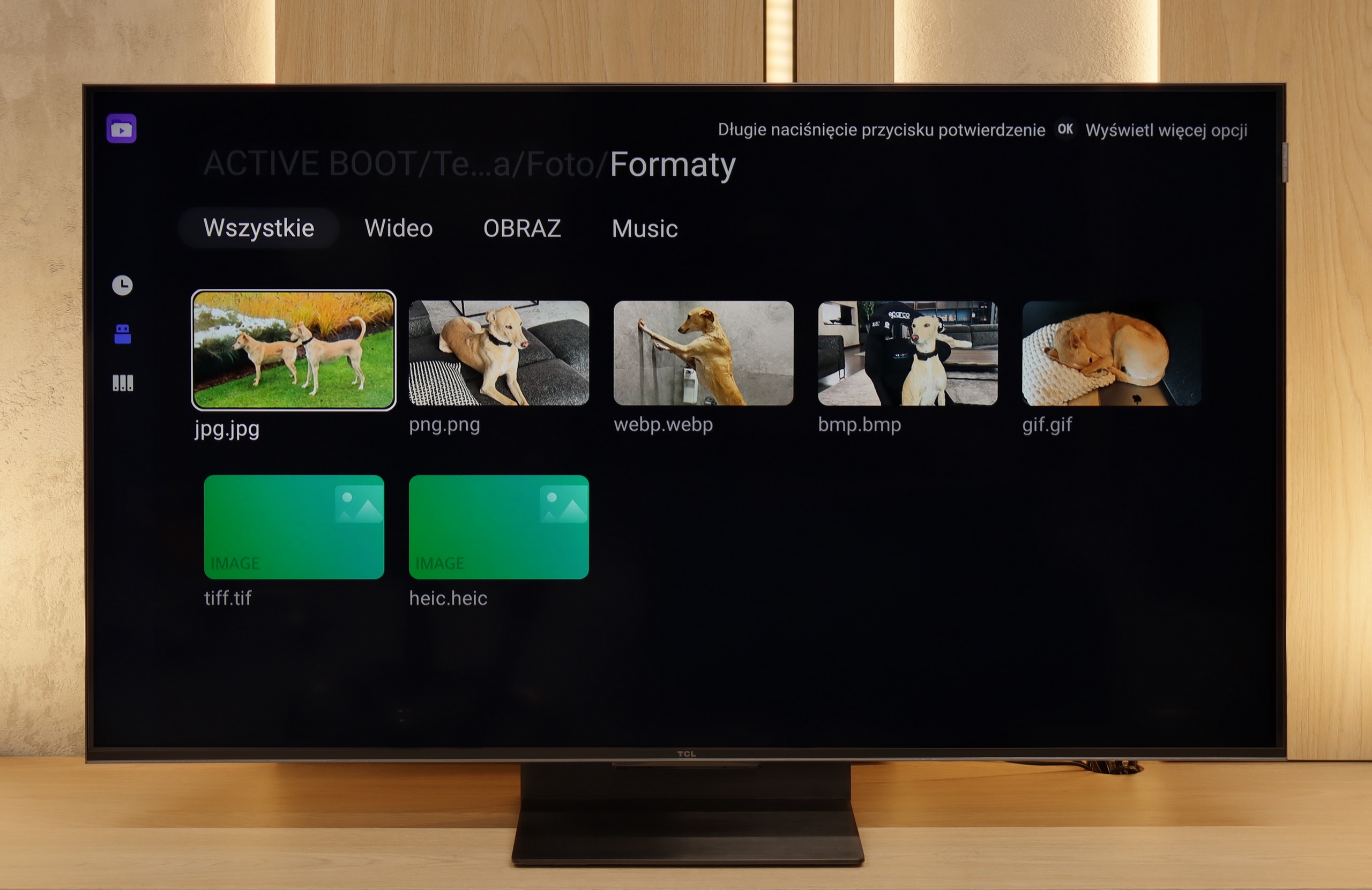
The built-in player on the TCL A300 works as it should – most popular video and photo files play without any problems. It lacks support for Apple's HEIC format (which is quite common in many TVs), but most users still use AirPlay, so it shouldn't be a major issue. If someone isn't satisfied with the default player, the Google TV system offers plenty of options – you can easily install an alternative app that better suits your tastes. Nevertheless, it's worth noting that the factory solution is completely sufficient for everyday use.
The built-in file player in the TCL C7K performs really well. It supports most popular audio and video formats, so if we want to quickly throw something from a USB stick and play it – there shouldn't be a problem. Of course, as is often the case, there might be some minor shortcomings – not every exotic codec will work (Apple's HEIC), not all subtitles will be perfectly synchronised (txt.). However, this is where the biggest advantage of this TV comes in, namely Google TV. With access to the Google Play Store, we can easily install an alternative player, such as VLC, and then no files will be a concern for us.
Apps
9.6/10
9.6/10














































Sound
6/10
7.7/10
- Maximum volume--
- Dolby Digital Plus 7.1
- Dolby True HD 7.1
- Dolby Atmos in Dolby Digital Plus (JOC)
- Dolby Atmos in Dolby True HD
- DTS:X in DTS-HD MA
- DTS-HD Master Audio
When it comes to sound, the TCL A300W – like its competitors – sounds quite... flat, after all, we are talking about a super slim television. For everyday watching of news or series, this level is more than sufficient, but during movie screenings, we might noticeably miss depth and space. On a positive note, it’s worth mentioning that the television supports both Dolby Atmos and the increasingly rare DTS:X – which provides more options when connecting an external audio system. It’s also worth noting that the A300 PRO model is equipped with a dedicated, flat soundbar. And it’s no ordinary soundbar – it sounds better than most of the televisions we’ve tested.
In the larger versions of the C7K (from 55 inches and above), the sound makes an even better impression than in the smallest 50-inch variant. This is due to the greater number of built-in speakers and additional channels, which allow for a fuller, more spatial sound. The bass becomes clearer, dialogues gain clarity, and the film effects can really fill the room.
It's worth mentioning the collaboration between TCL and Bang & Olufsen, which appeared in the 2025 models. Even if we don't have a hundred percent certainty that original Danish company drivers are working inside, the final effect is surprisingly positive. For a television without an additional soundbar, the larger C7K models offer sound that can be enjoyed even during longer movie sessions.
